Indian Mountain State Park, Jellico, Tennessee
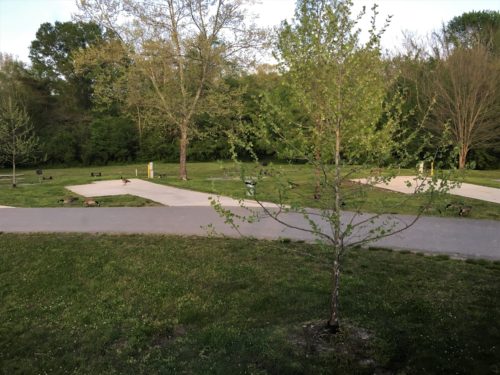
Good morning to our fine feathered friends!
We crossed back over the border into Kentucky to spend the day in the Cumberland Falls State Resort Park, the Daniel Boone National Forest and the Big South Fork National River and Recreation Area. We’re here, in large part, because of a story about Big South Fork featured on the Weather Channel. They were talking to a Ranger, and it looked and sounded interesting and Blaine looked up where Big South was, and it was only about an hour from Jellico!
Let’s get the obvious out of the way first. Y’all sing along now . . . .
Daniel Boone was a man,
Yes, a big man!
With an eye like an eagle
And as tall as a mountain was he!
Daniel Boone was a man,
Yes, a big man!
He was brave, he was fearless
And as tough as a mighty oak tree!
From the coonskin cap on the top of ol’ Dan
To the heel of his rawhide shoe;
The rippin’est, roarin’est, fightin’est man
The frontier ever knew!
Daniel Boone was a man,
Yes, a big man!
And he fought for America
To make all Americans free!
What a boon, what a do-er,
What a dream come-a true-er was he!
Daniel Boone was a man,
Yes, a big man!
With a whoop and a holler
He could mow down a forest of trees.
With a knife and a gun he never did fail
There was nothin’ he could not tame.
He blazed a big wide liberty trail
Through history’s hall of fame.
Daniel Boone was a man,
Yes, a big man!
With a dream of a country
That would always forever be free.
What a boon, what a do-er,
What a dream come-a true-er was he!
Oh, come on now. Don’t even try to tell me you don’t remember this theme song from the six-year TV series in the 70’s starring Fess Parker! I know you do! At least the first two lines, if nothing else.
Here’s the real story first from History.com and then Biography.com:
Daniel Boone is one of the most widely known American frontiersmen. Boone’s fame stems from his exploits during the exploration and settlement of Kentucky. He first arrived in the future state in 1767 and spent the better part of the next 30 years exploring and settling the lands of Kentucky, including carving out the Wilderness Road and building the settlement station of Boonesboro.
Daniel Boone (1734-1820) is the most widely known of American frontiersmen. He served as the model for James Fenimore Cooper’s Leatherstocking, and his adventures inspired incidents in hundreds of works of fiction. Even Lord Byron mentioned him in Don Juan. Without Boone the history of Kentucky would have been much different.
Boone was born near Reading, in Berks County, Pennsylvania, the son of hard-working but adventurous Quaker parents. He learned some blacksmithing but had very little formal education. Daniel appears to have been a scrappy lad who loved hunting, the wilderness, and independence. When his parents left Pennsylvania in 1750 bound for the Yadkin valley of northwest North Carolina, Daniel went along willingly.
There, on the cutting edge of the frontier, he was able to indulge his hunting prowess and love of the wilderness. In the following years he served as a wagoner with Gen. Edward Braddock’s ill-fated expedition to Fort Duquesne in 1755; married a neighbor’s daughter, Rebecca Bryan, in 1756; and in 1758 is believed to have been a wagoner with Gen. John Forbes who was hacking out the road to Fort Duquesne, which he rebuilt as Fort Pitt (now Pittsburgh). Back in North Carolina, Daniel purchased land from his father but never seriously engaged in farming; he loved to roam. In 1763 he and his brother Squire journeyed to Florida, although for unknown reasons they did not stay.
Boone’s fame rests primarily upon his exploration and settlement of Kentucky. He was first in eastern Kentucky in 1767, but his expedition of 1769-1771 is more widely known. With a small party Boone advanced along the Warrior’s Path into an Edenic region. When the time came for the party to return he remained behind in the wilderness until March 1771. On the way home, he and his brother were robbed by Indians of their deerskins and pelts, but the two remained exuberant over the land known as “Kentuck.”
So much did Daniel love that “dark and bloody ground” that he tried to return in 1773, taking forty settlers with him, but the Indians drove them back. The next year he went again into the region carrying a warning of Indian troubles to Governor John Murray Dunmore’s surveyors. Even as Judge Richard Henderson was concluding the Treaty of Sycamore Shoals (March 1775) by which much of Kentucky was sold to his Transylvania Company, Boone was hacking out the Wilderness Road. As soon as he reached his destination, he began building Boonesboro, one of several stations (forts) under construction at that time.
For the next four years—through 1778—Boone, a captain in the militia, was busy defending the settlements. His leadership helped save the three remaining Kentucky stations, Boonesboro, Logan’s (St. Asaph’s), and Harrodsburg. These were stirring years of ambushes (such as Blue Licks in 1778), captures (Boone was seized but escaped from the Shawnees), rescues, and desperate defenses.
Although he was highly respected and served in the Virginia assembly, Boone was not a good businessman and he lost his Kentucky lands. In September 1799, he set out for Missouri where a son had preceded him. He settled in the Femme Osage valley where he continued to hunt and roam until his death. Twenty-five years later his remains and those of his wife were returned to Kentucky for burial.
Daniel Boone was helped to immortality through the writings of John Filson, whose The Discovery, Settlement and Present State of Kentucke included an appendix containing “The Adventures of Col. Daniel Boon [sic].” The book was widely read in England and Europe as well as in America, and Boone became the model of the American frontiersman. But even if he had not been cast as a heroic figure in Kentucke, residents of Kentucky would still honor him as that state’s frontier hero.
Daniel Boone was an American explorer and frontiersman who blazed a trail through the Cumberland Gap, thereby providing access to America’s western frontier.
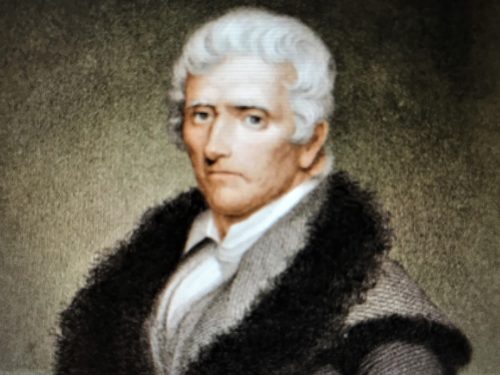
And from Biography.com:
Who Was Daniel Boone?
Daniel Boone was born in 1734 near Reading, Pennsylvania. He left home on a military expedition during the French and Indian War, and in 1769 Boone led an expedition that discovered a trail to the west though the Cumberland Gap. In 1775, he settled an area he called Boonesborough in Kentucky, where he faced Indian resistance. Boone died in Femme Osage Creek, Missouri, in 1820.
Daniel Boone’s Children
In August 1756, Boone wed Rebecca Bryan, and the couple set up stakes in the Yadkin Valley. Over a 24-year period, the couple would have 10 children together. At first Boone found himself content with what he described as the perfect ingredients to a happy life: “A good gun, a good horse and a good wife.” But adventure stories Boone had heard from a teamster while on march ignited Boone’s interest in exploring the American frontier.
In 1767, Daniel Boone led his own expedition for the first time. The hunting trip along the Big Sandy River in Kentucky worked its way westward as far as Floyd County.
How Tall Was Daniel Boone?
According to Genealogy Trails, Boone stood at 5 foot 8 inches tall and had a stocky build.
Childhood
American explorer and frontiersman Daniel Boone was born on November 2, 1734, in a log cabin in Exeter Township, near Reading, Pennsylvania. His father, Squire Boone, Sr., was a Quaker blacksmith and weaver who met his wife, Sarah Morgan, in Pennsylvania after he emigrated from England.
Daniel, the couple’s sixth child, received little formal education. Boone learned how to read and write from his mother, and his father taught him wilderness survival skills. Boone was given his first rifle when he was 12 years old. He quickly proved himself a talented woodsman and hunter, shooting his first bear when most children his age were too frightened. At age 15, Boone moved with his family to Rowan County, North Carolina, on the Yadkin River, where he started his own hunting business.
A Timeline of Daniel Boone’s Expeditions
French and Indian War
In 1755, Boone left home on a military expedition that was part of the French and Indian War. He served as a wagoner for Brigadier General Edward Braddock during his army’s calamitous defeat at Turtle Creek, near modern-day Pittsburgh. A skilled survivor, Daniel Boone saved his own life by escaping the French and Indian ambush on horseback.
Cumberland Gap
In May 1769, Boone led another expedition with John Finley, a teamster Boone had marched with during the French and Indian War, and four other men. Under Boone’s leadership, the team of explorers discovered a trail to the far west though the Cumberland Gap. The trail would become the means by which settlers would access the frontier.
Boone took his discovery a step further in April 1775: While working for Richard Henderson’s Transylvania Company, he directed colonists to an area in Kentucky he named Boonesborough, where he set up a fort to claim the settlement from the Indians. That same year he brought his own family west to live on the settlement and became its leader.
Local Shawnee and Cherokee tribes met Boone’s settlement of the Kentucky land with resistance. In July 1776, the tribes kidnapped Boone’s daughter Jemima. Eventually, he was able to release his daughter. The next year, Boone was shot in the ankle during an Indian attack, but he soon recovered. Boone was himself captured by the Shawnee in 1778.
He managed to escape and resume protecting his land settlement, but was robbed of Boonesborough settlers’ money while on his way to buy land permits. The settlers were furious with Boone and demanded he repay his debt to them; some even sued. By 1788, Boone left the Kentucky settlement he had worked so hard to protect and relocated to Point Pleasant, in what is now West Virginia. After serving as lieutenant colonel and legislative delegate of his county there, Boone pulled up stakes again and moved to Missouri, where he continued to hunt for the remainder of his life.
Daniel Boone TV Show
The legend surrounding Boone was so popular in American culture that NBC launched an action-adventure TV show about him in 1964, starring actor Fess Parker as Boone and lasting six seasons. An earlier TV show on Boone, played by Dewey Martin, was made by The Walt Disney Company (previously known as Walt Disney Productions) in 1960.
How Did Daniel Boone Die?
On September 26, 1820, Daniel Boone died of natural causes at his home in Femme Osage Creek, Missouri. He was 85 years old. More than two decades after his death, his body was exhumed and reburied in Kentucky. Regardless of the folklore surrounding his figure, Boone indeed existed and is still remembered as one of the greatest woodsmen in American history.
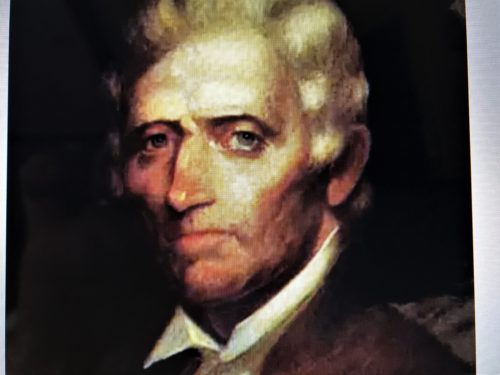
I never found a picture of the real Daniel wearing anything but nice clothes, let alone a coonskin cap. : )
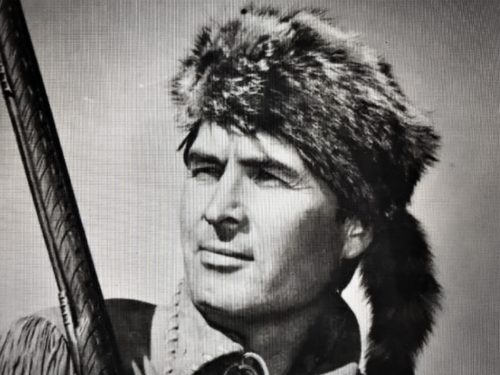
Fess looks a lot like Daniel, don’t you think?
We drove 25 minutes today to get to the Cumberland Falls, our first stop. The journey took us up, down and all around the mountains, past a variety of homes, some really run down with dozens and dozens of trash bags sitting all around and garbage strewn hither and yon across the yards.
It was still early, only 8:30am when we arrived and no one else was about, although there were a couple of cars in the parking lot. (we discovered later that those most likely belonged to fishermen we ran across)

Pretty impressive today, but we were really surprised to learn that at times there’s nothing more than a trickle!
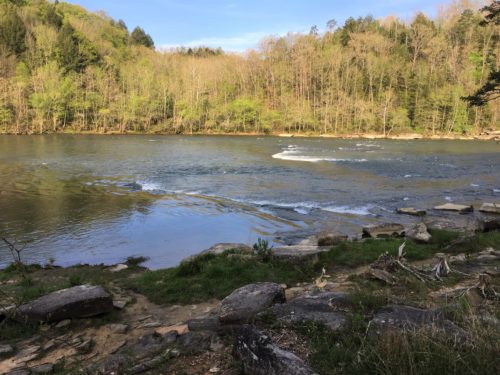
The Cumberland River, just before the waterfall.
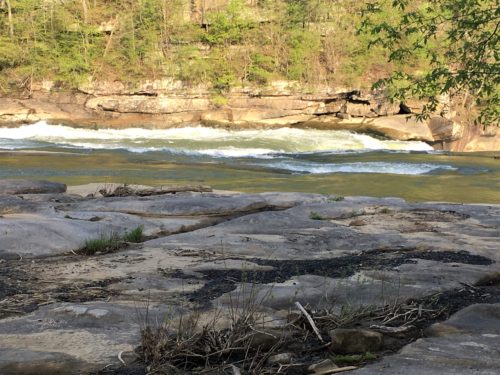
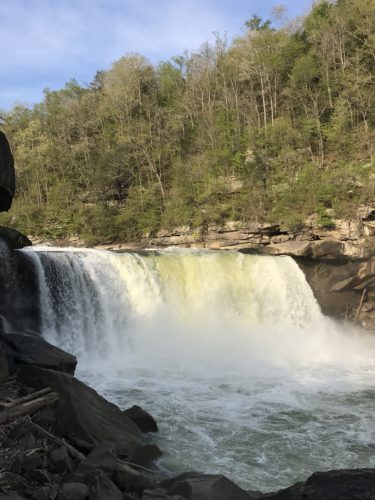

The other impressive thing here was the potential for a Moonbow. Ever heard of that? Us either. Probably because they only predictably happen here and at Victoria Falls in Africa! There’s one coming up, but we won’t be there. You have to be in the Park about 3am to see it. And since we wouldn’t be able to photograph it, forget it. Maybe when we visit Africa someday . . . . (yeah. right.)
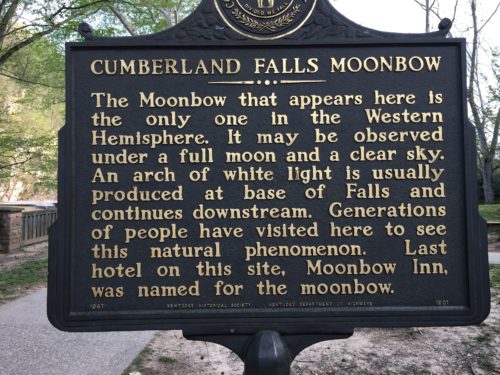
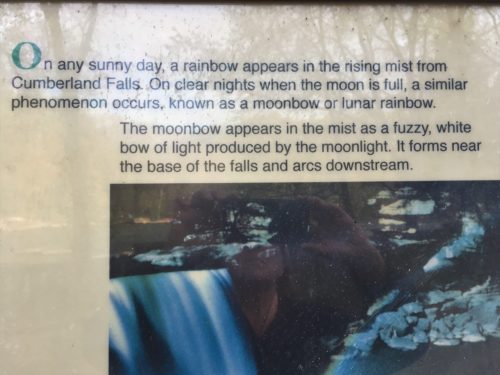

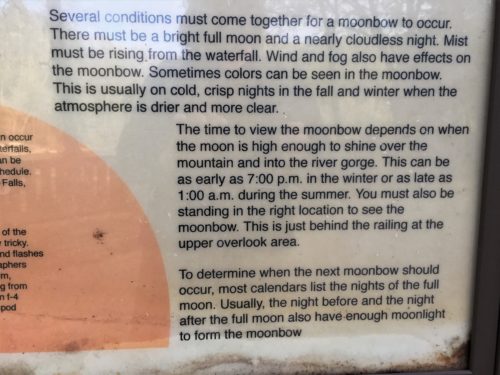

So now you know what you need to do, should you decide to take a moonbow picture – – in the US.
There were several man-made viewpoints at this Park, and since we were the only ones about, we took our time thoroughly checking them all out and learning stuff.

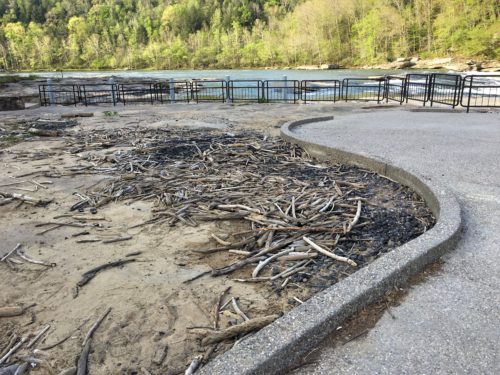
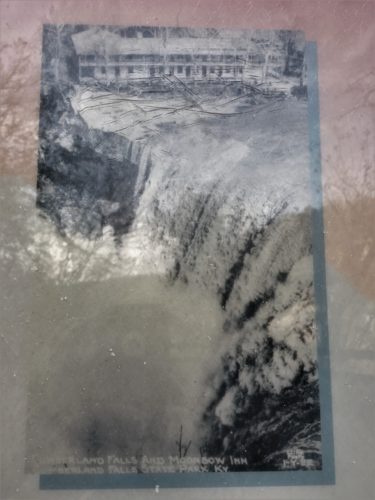
See the hotel?
We think that’s where the gift shop and Visitor Center (closed) are today.
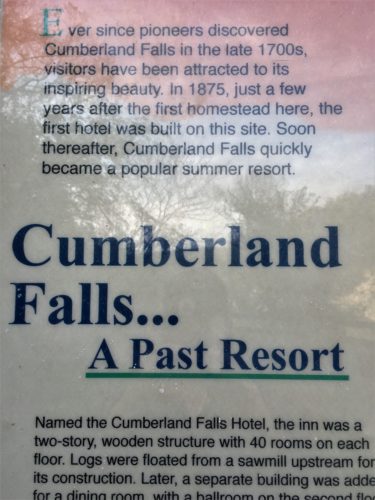



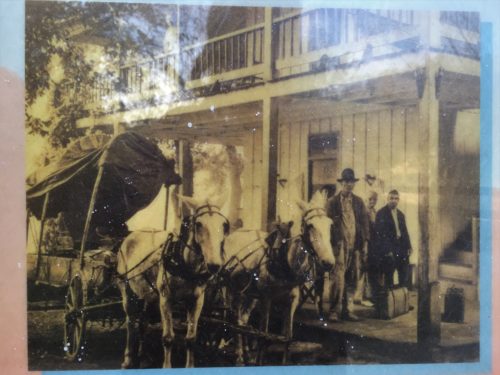
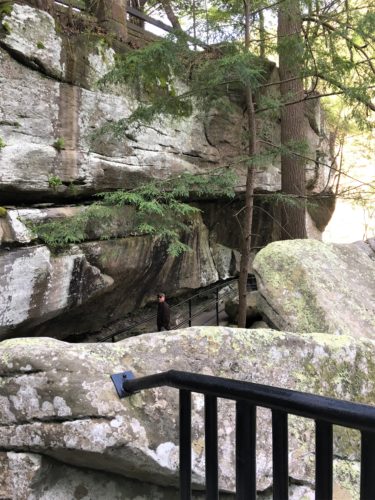
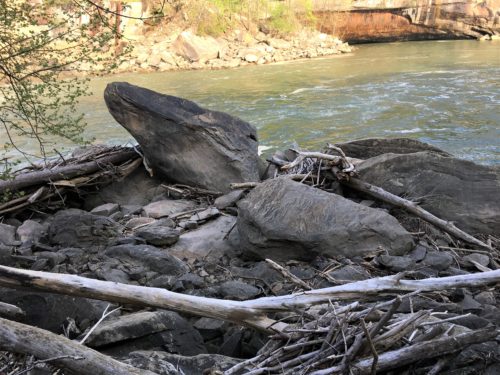
Blaine thinks this rock looks like a giant alligator! Ha!
Think he spent too much time down near the bayou! : )
But he’s right . . . .


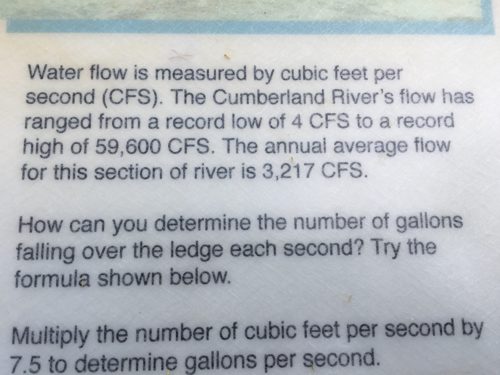
I don’t understand all that, but I did understand the wide variance of numbers!
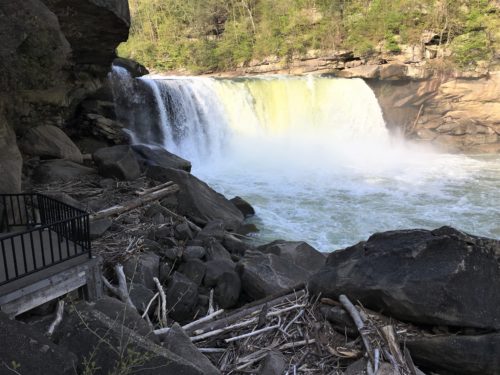
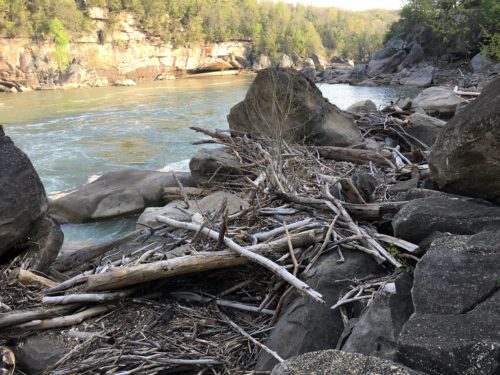
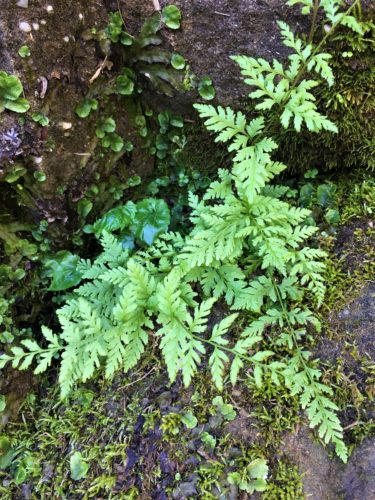
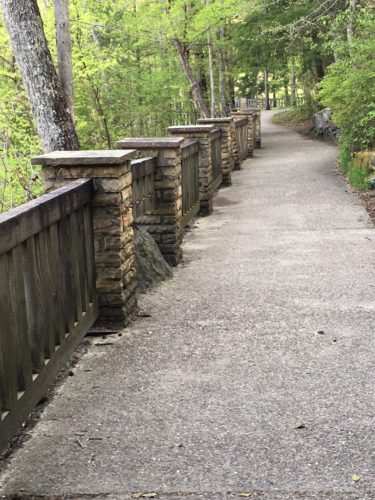
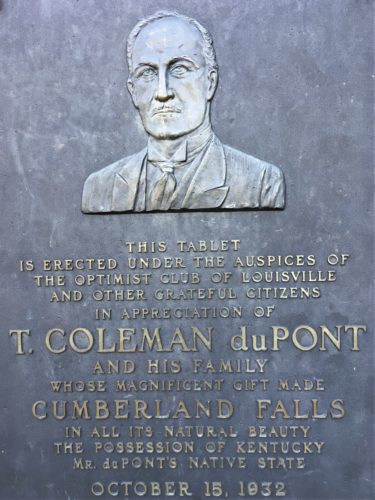
Thank you Mr. duPont and family, whomever you may be!
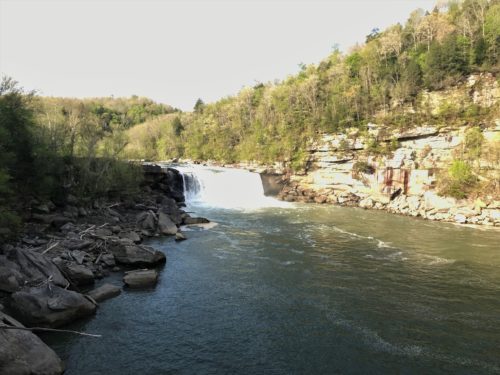

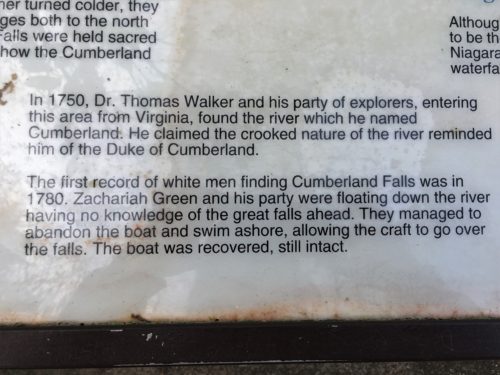
The information given on the namesake made us smile. : )
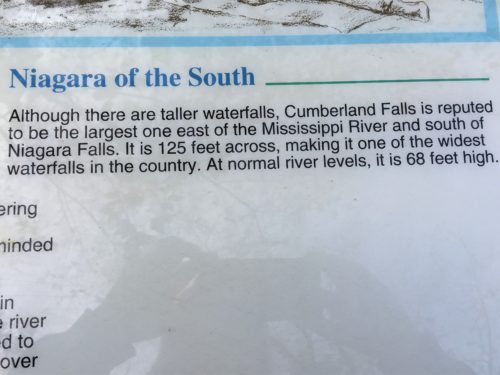

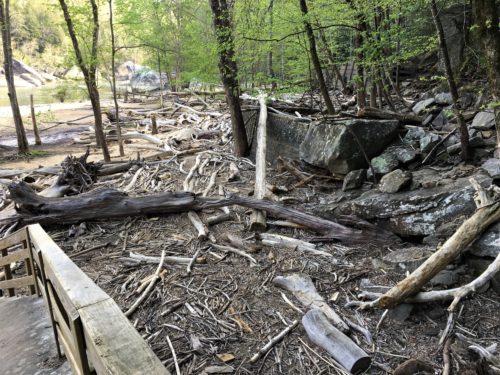
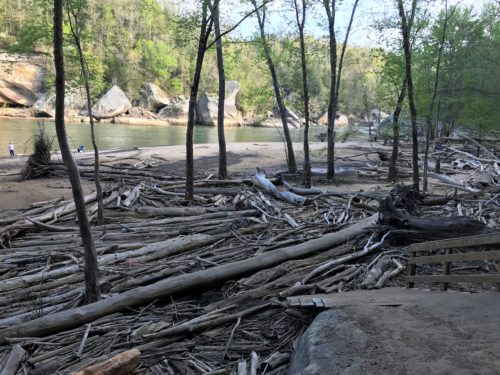
The volume of driftwood here is astonishing!
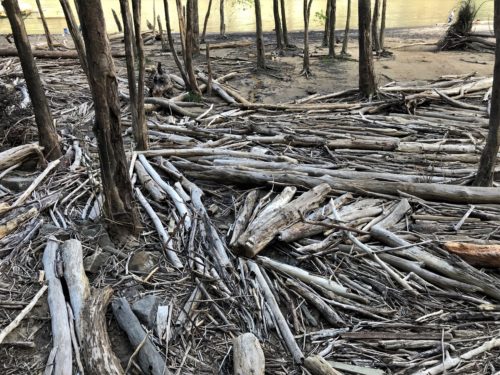
You can see how the water swirled it around . . . . .
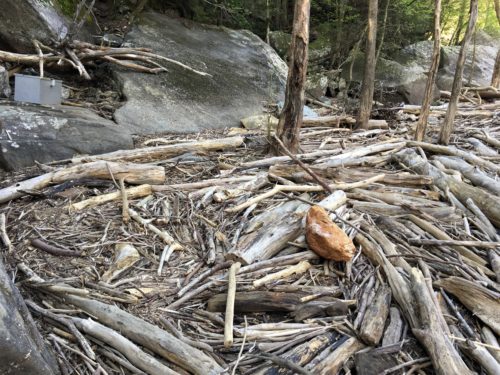
Wonder how often that happens?

We found the probable owners of the cars in the lot.
Do you suppose they catch anything?
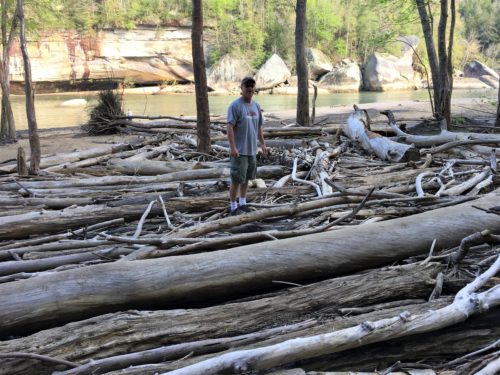
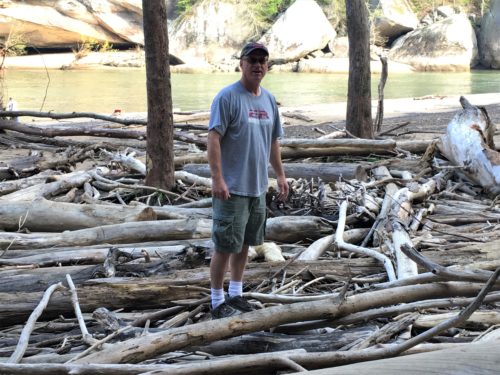

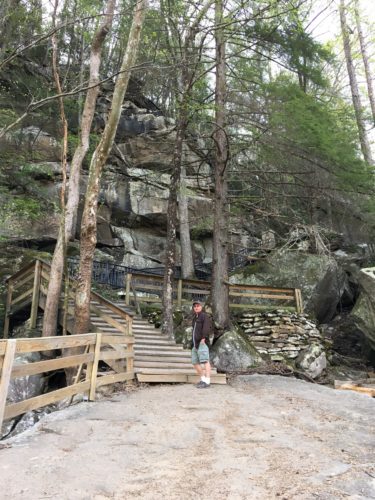
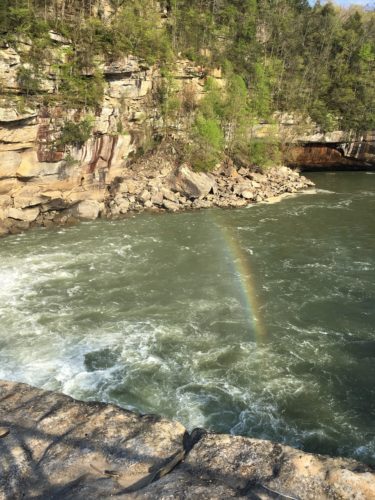
No Moonbow, but a Rainbow!!
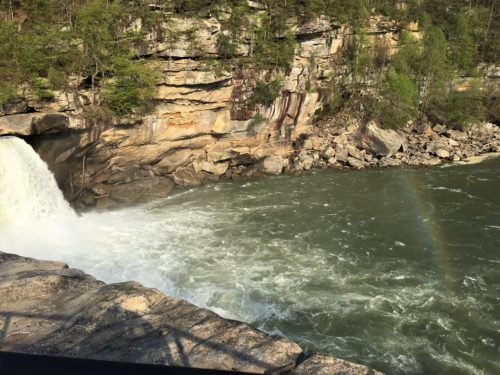
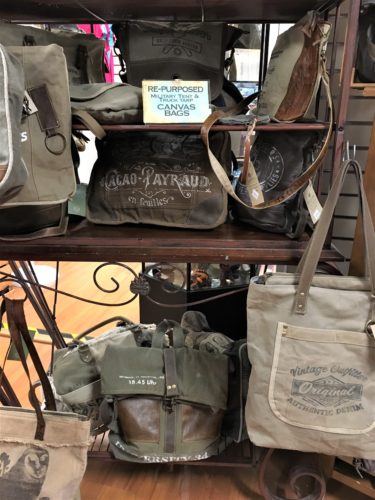
The gift shop opened just as we were leaving.
We just glanced about, but these purses were certainly unique!
And expensive! Especially considering there’s little cost in material.
Guess it’s artistic value.
I’m not an art collector. For which Blaine is grateful. : )
“Re-purposed Military Tent and Truck Tarp Canvas Bags”


This is all we did here. On to Daniel Boone’s namesake Forest.
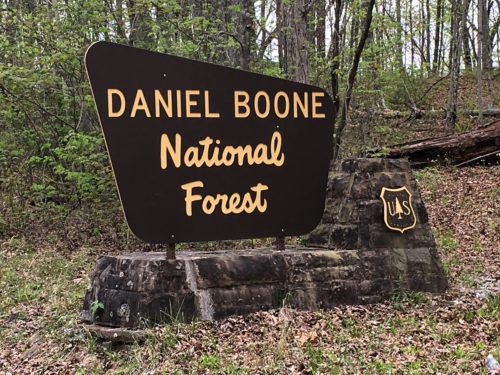
This was an even more narrow and winding drive! But so scenic! We’re looking for the Natural Arch. I couldn’t find all the dimensions for it, but it spans 125 feet! Blaine’s best guess, after seeing it up close, is that it’s about 75’ high. We ventured to the scenic overlook first before taking on the trail.

Awww . . . .
Perfectly preserved. : (
Wonder what happened?
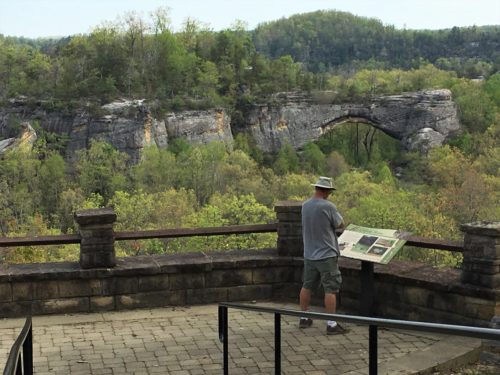
There’s the Arch!
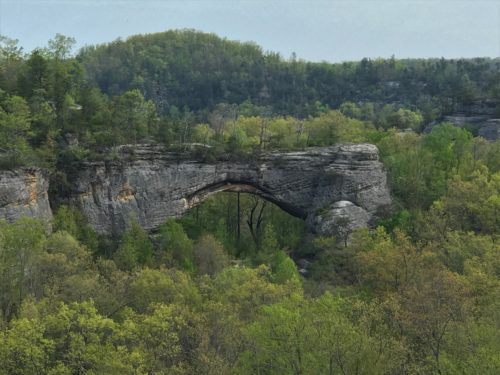
There’s not much in the way of markers or information here – or online, which made this morning an adventure in itself. The supposed one-mile loop trail, ended up taking us around and around and up and down for about two and a half miles instead!
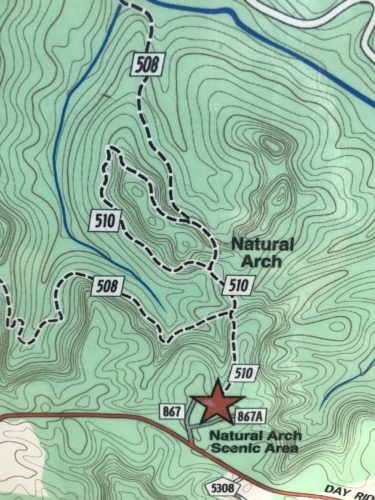
This is all there was on the information board.
Hmmm . . . . .
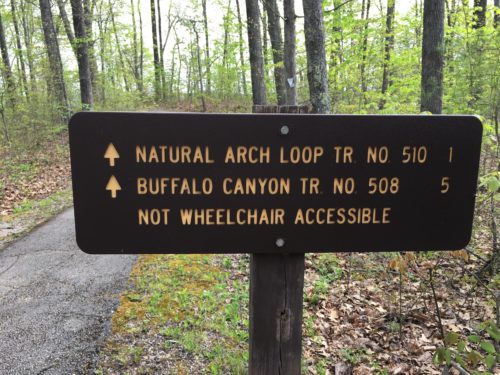
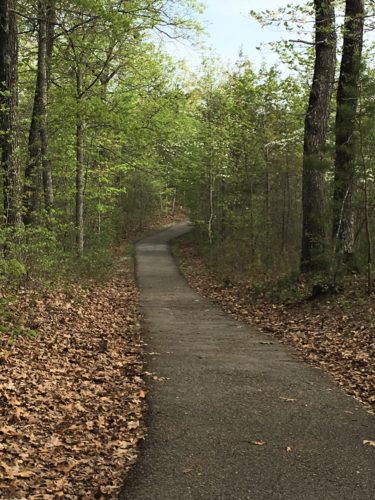
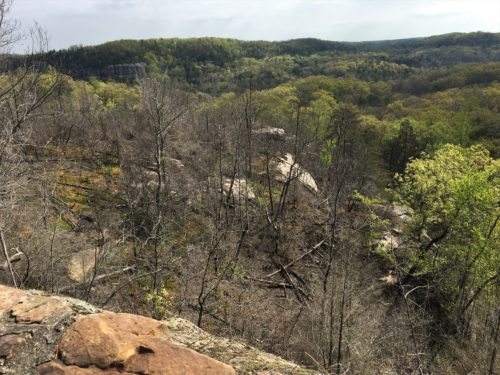
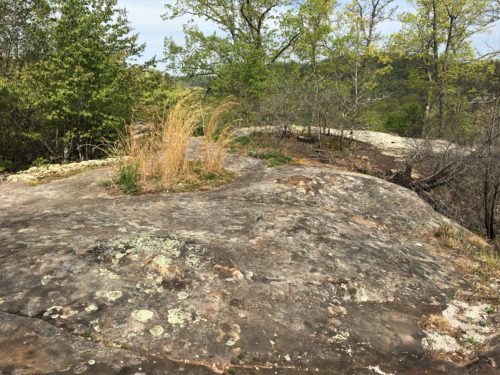
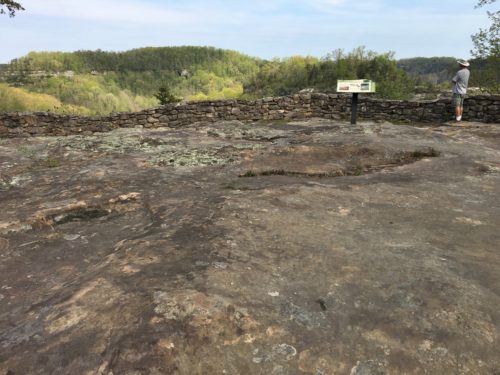
Another viewing area along the way.
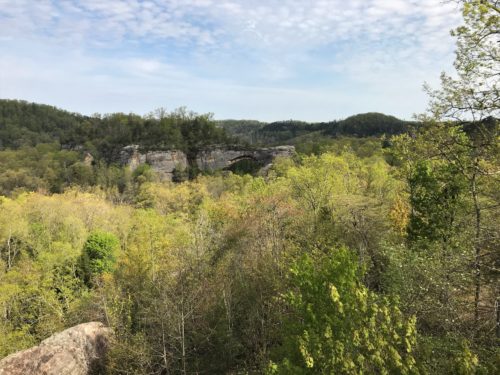

Not there yet . . . .
But closer!

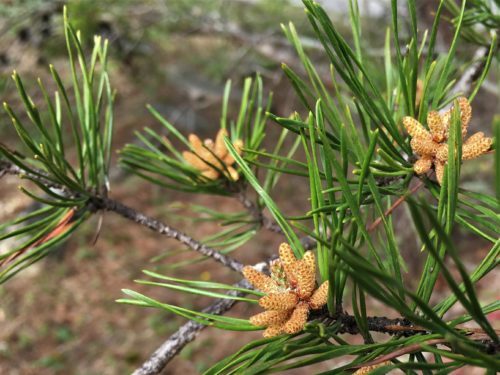

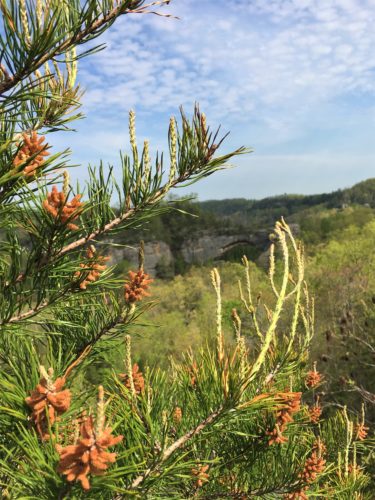
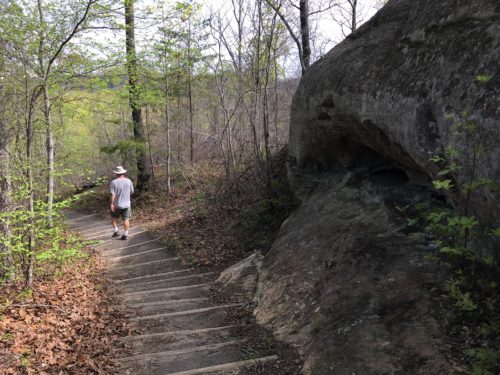
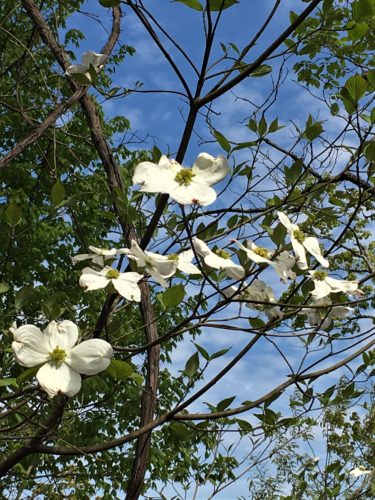
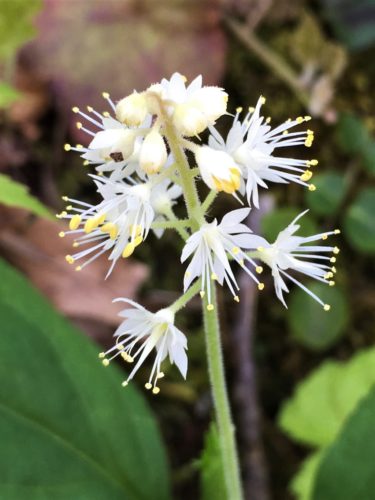
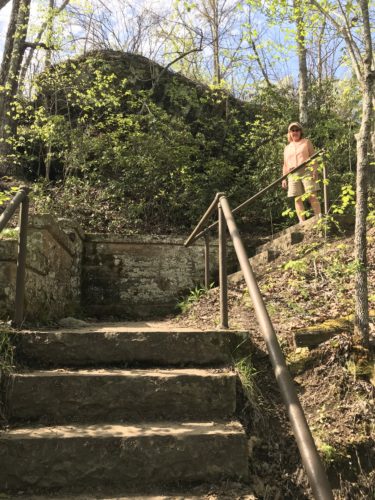
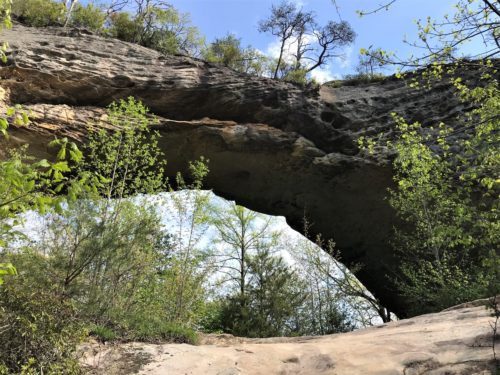
There it is!
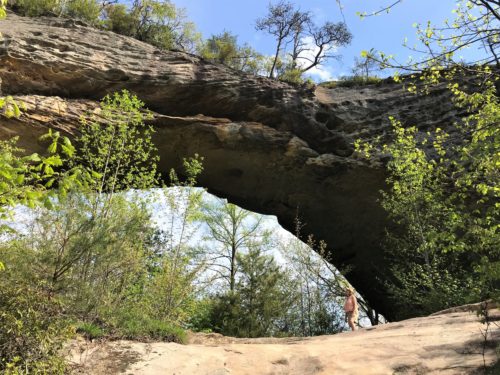
Adding perspective to the picture.
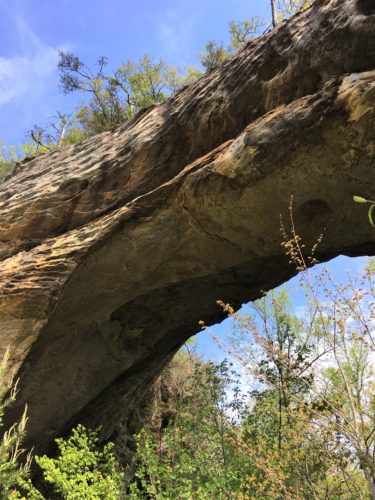
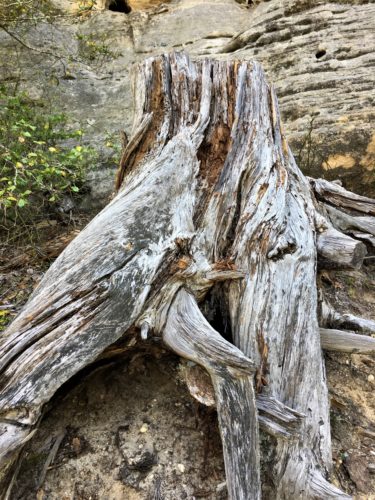
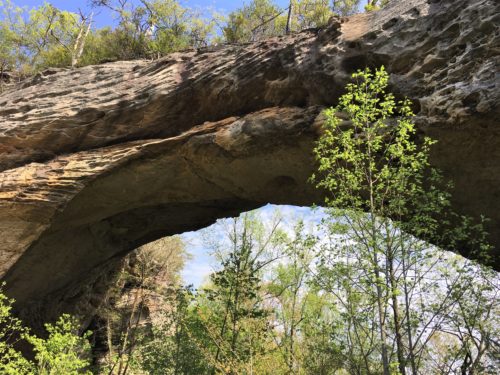
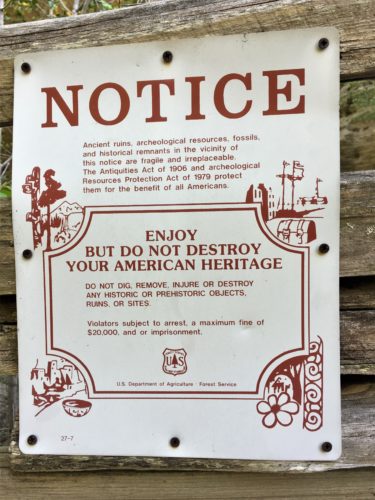
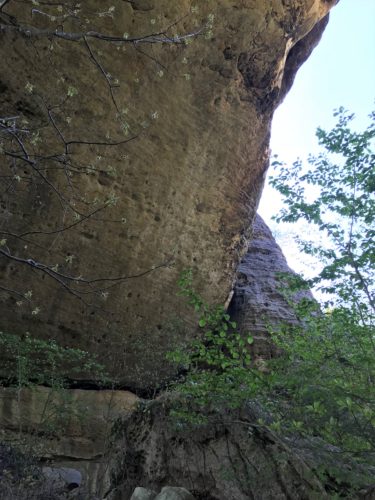
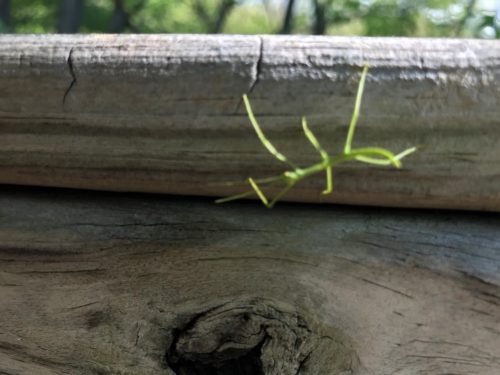

Under the Arch
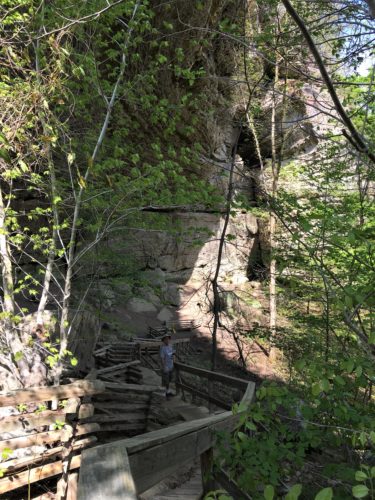
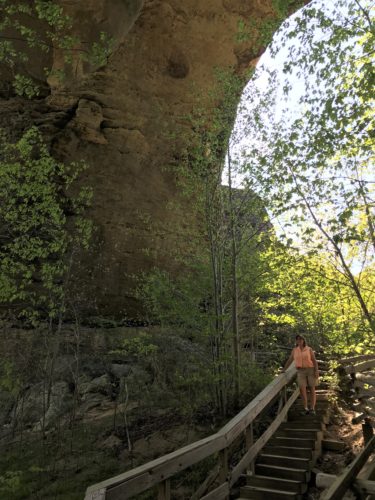

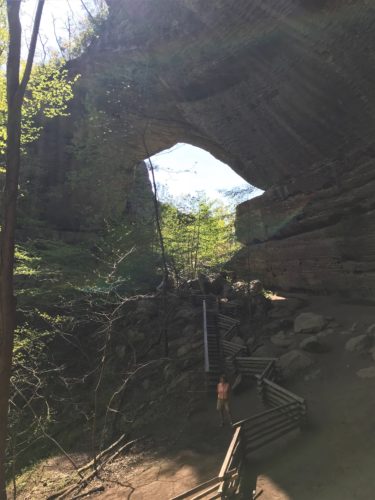
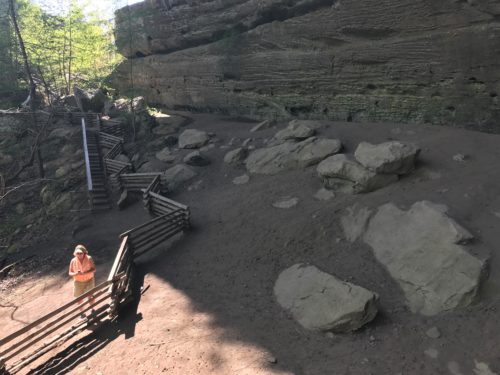

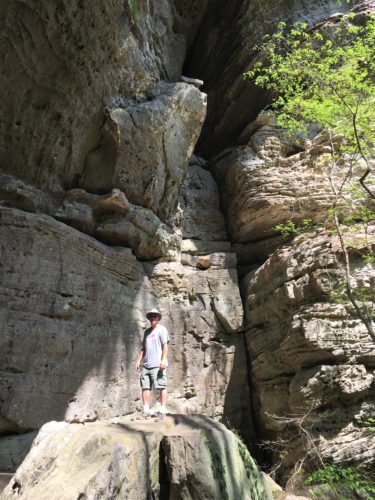
There’s where Blaine took his ‘elevated’ pictures from.
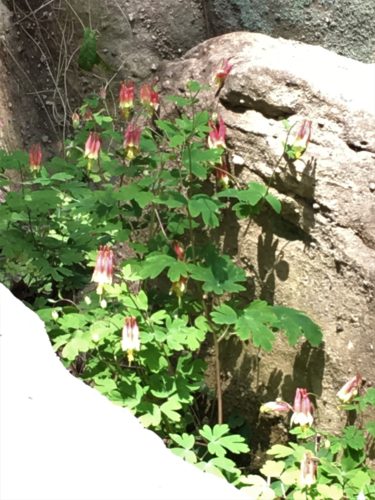
I stayed on the ground. But I couldn’t get a good picture because I couldn’t get close enough.
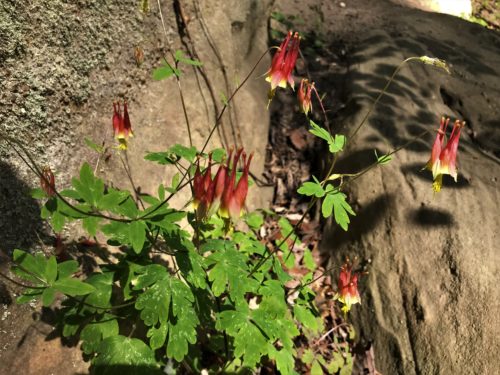
So I asked Blaine to get this one. Thanks!
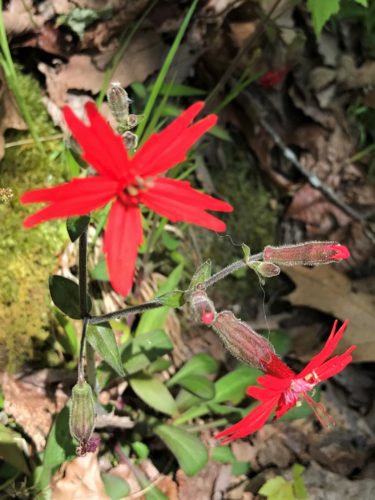
He took this one too (on his own). Look at the detail!
This is what happened; the brown sign said it (#510) was a one-mile loop, but because there wasn’t anything to tell us differently, we initially thought the loop was sort of to the Arch and back to the parking lot. It wasn’t. When we were ready to leave the Arch, we saw a trail and started out on it, but after a bit, we thought we’d gotten on a different 5-mile trail (#508), so we turned around and went back to the Arch. Then we headed in the opposite direction and kept going – one mile – and back on the trail we’d thought was a different trail, and so we retraced that part and back to the Arch. We felt like we were going around and around in circles, or at least up and down the same path.
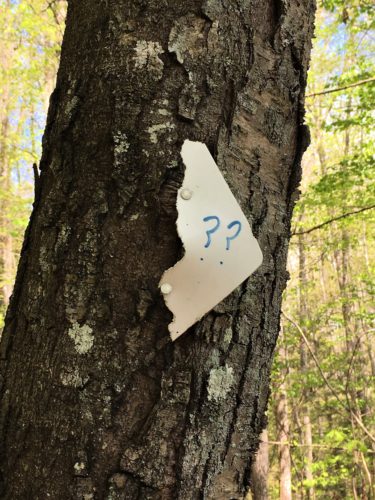
Our sentiments exactly!
And we were! At least Blaine had taken a picture of the map so he could refer to it!
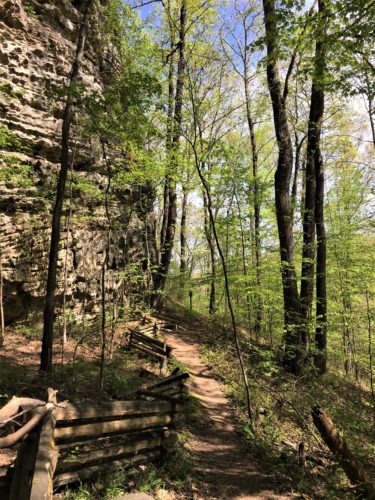
And so we begin – –
taking on our extra mileage . . .
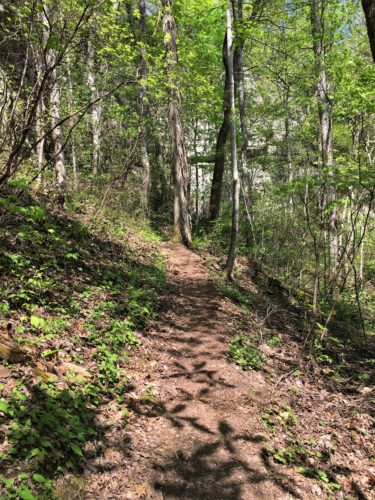
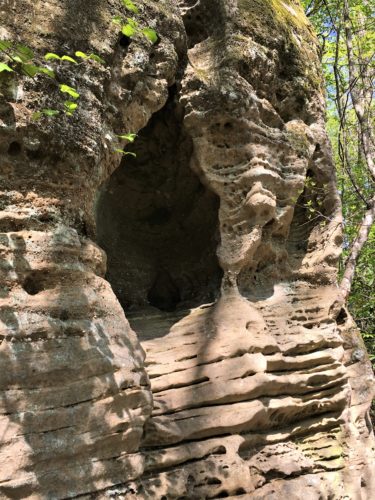

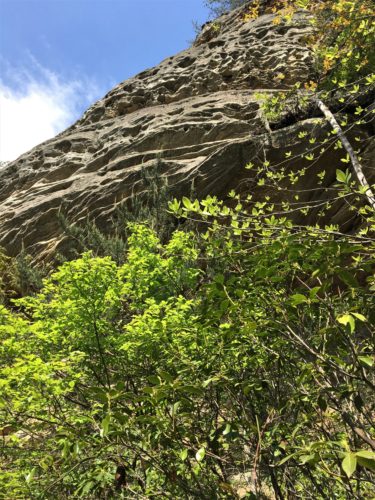
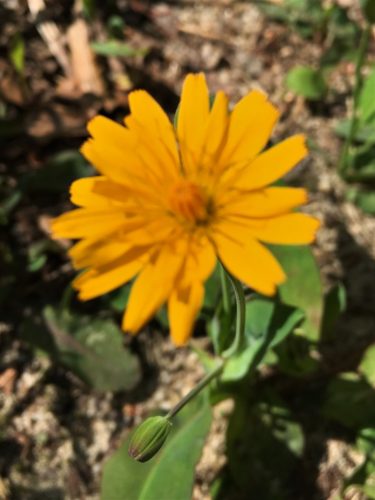
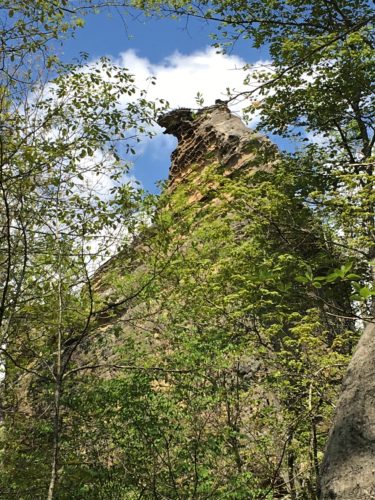
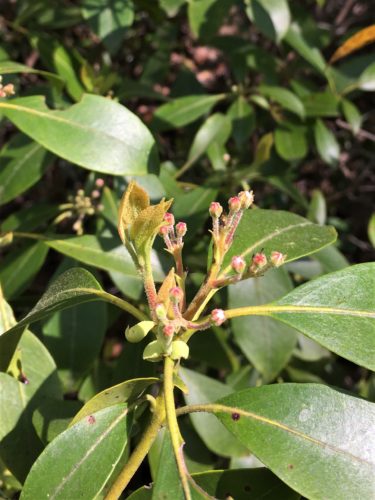
We think this is Mountain Laurel preparing to bloom.
The leaves look a little like rhododendron, only smaller.
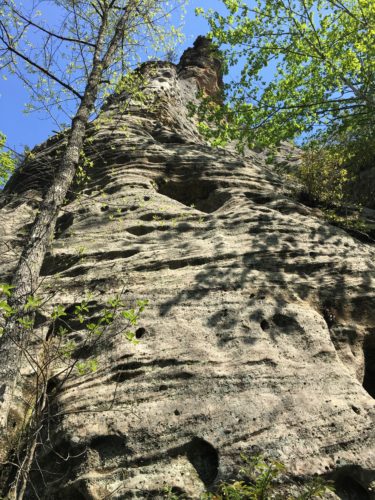
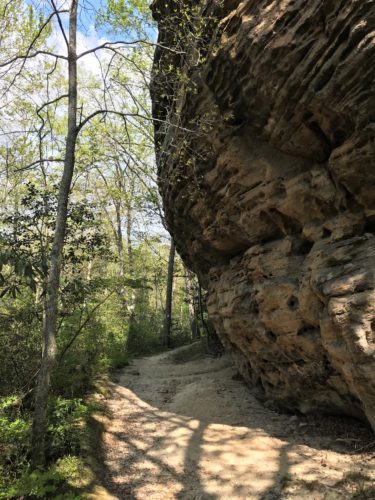
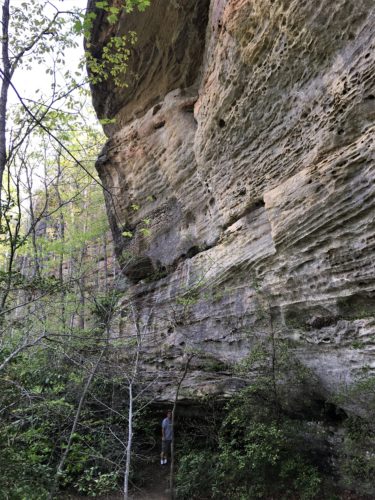

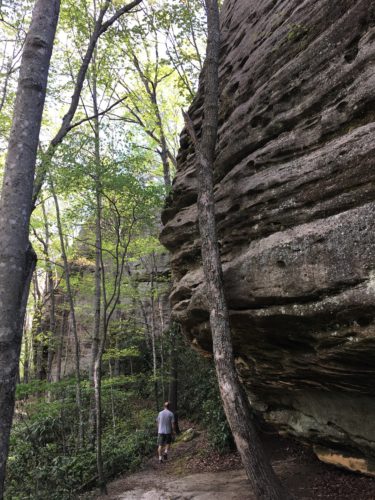

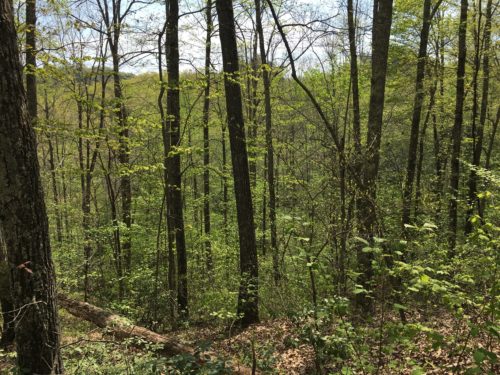
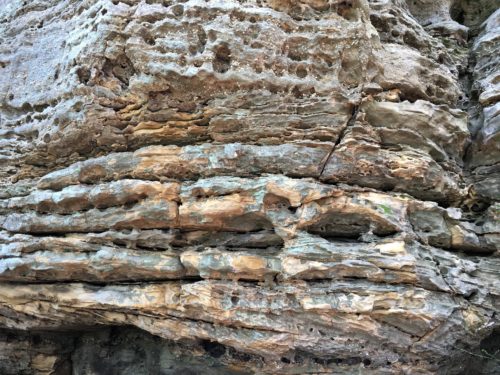
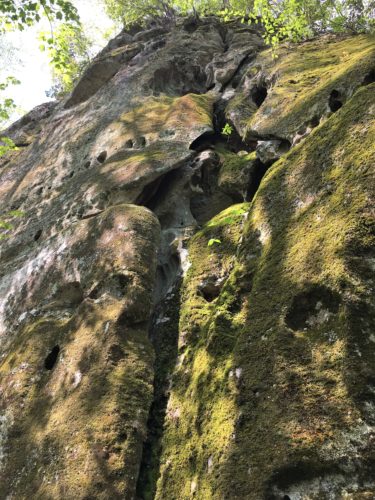
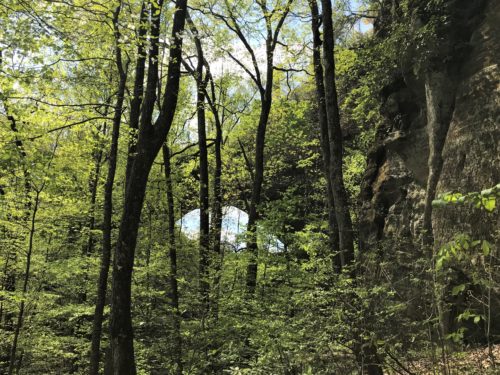
By the time we returned to the Jeep, hot and thirsty (you don’t need water for a one-mile walk), it was lunch time. There were shaded picnic shelters scattered around near where Park personnel were working on improvements. In the middle of our lunch, two men came over, plugged in a chain saw and cut about 3-4” off a board. They apologized for the interruption, but it really didn’t bother us. As long as they don’t steal our chocolate chip cookies we had sunning nearby! 😊
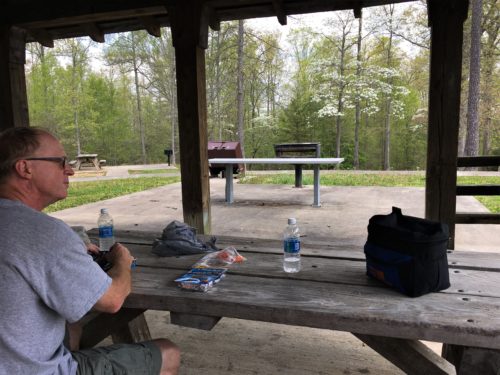
Moving on, we saw a sign as we were leaving that said, “Panoramic Trail – 1 mile”. It’s close, it sounds nice, we made a detour.
There was no trail marker. Nothing. The only thing was a small parking area and a well-worn warning sign way off to the side of the lot.
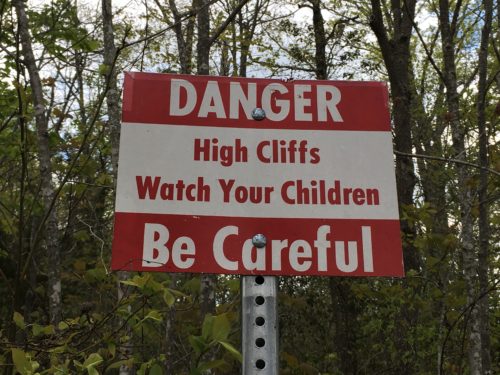
We walked on a dirt path for a little while and were about to turn around, when Blaine was able to obtain service. He went to his trusty “All Trails” app and learned the length of the trail and also our position on it. They said the view was worth the short 1.1 mile round trip walk, so we persevered to the end.
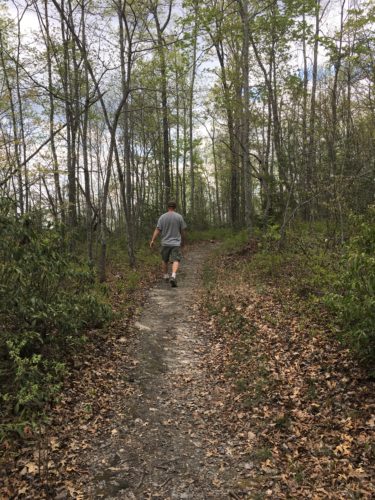
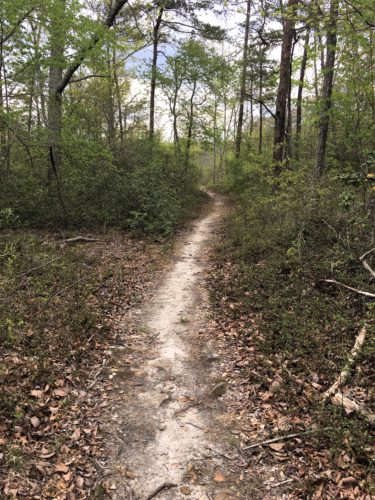
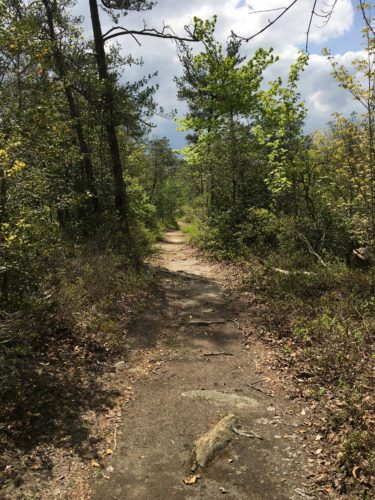
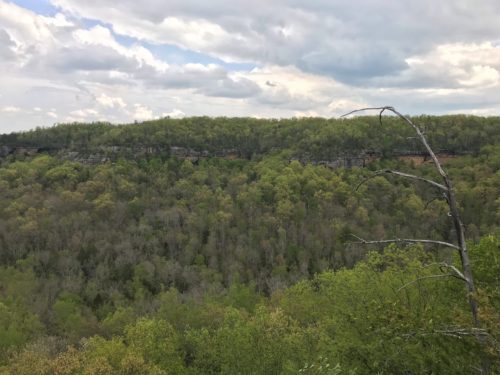
Whoa!!!!
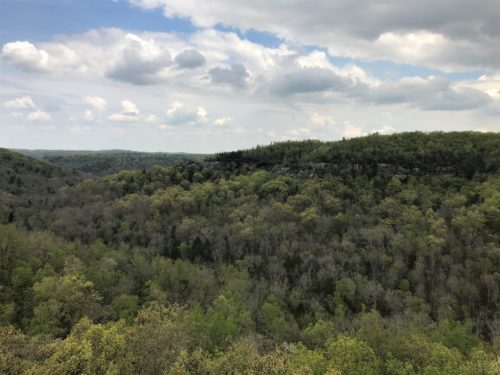
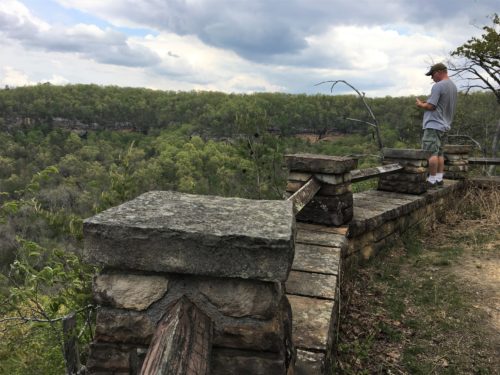
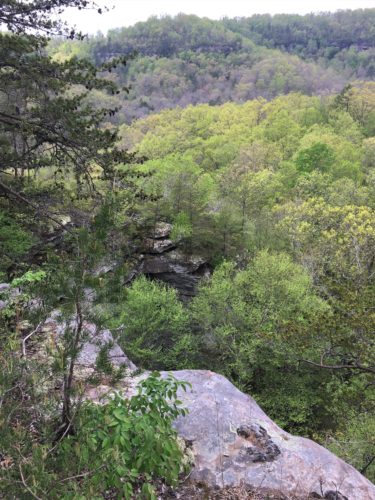
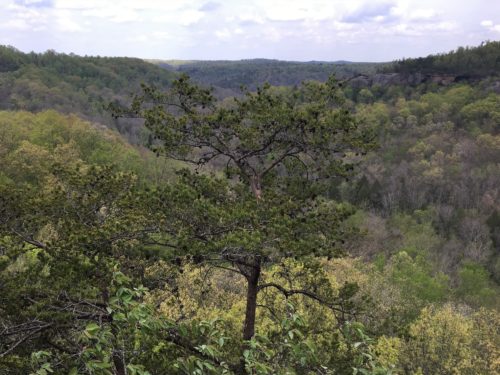
Nice detour!
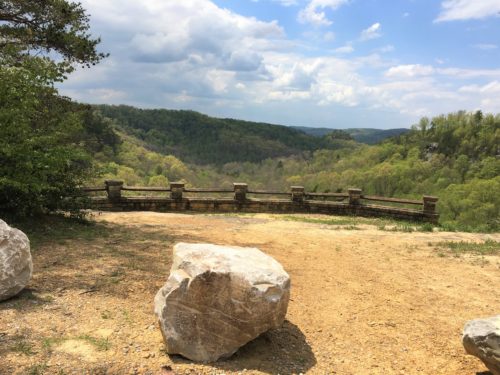
An overlook along the road.
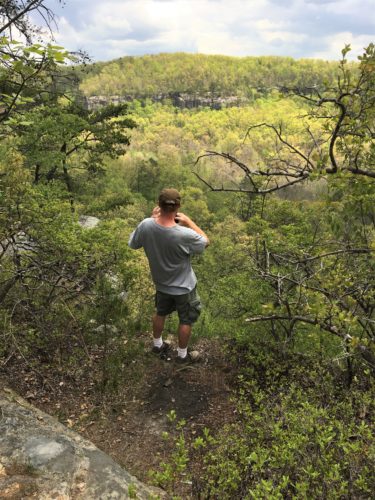
Always going above and beyond . . .
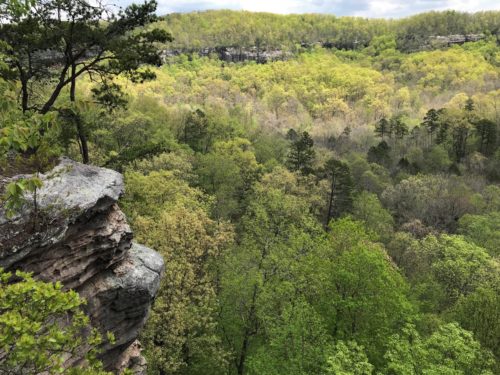

Now for today’s final destination – Yahoo!
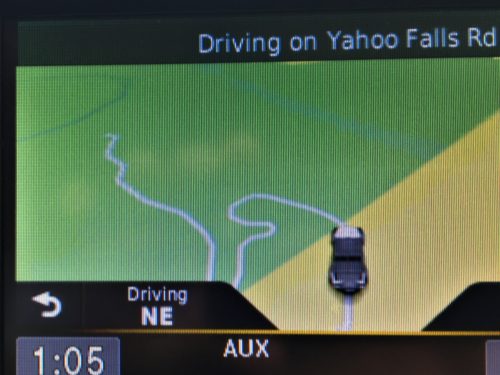
Yahoo Arch and Falls are at the Big South Fork National Park that we saw on the Weather Channel. The Arch trail is a 3-mile round trip, fairly strenuous hike. Once again, not much signage – just at the beginning of the trail – and nothing alerts you to the level of difficulty. And again, we wonder . . . why???
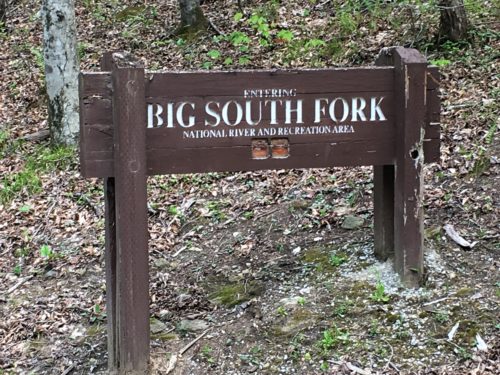
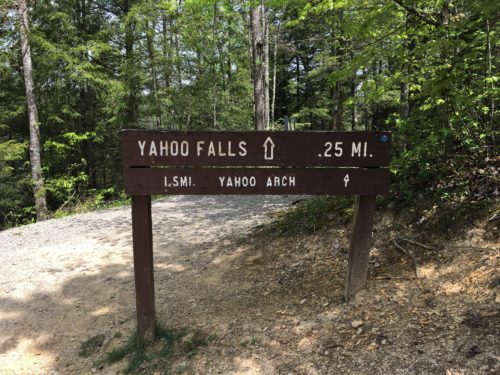

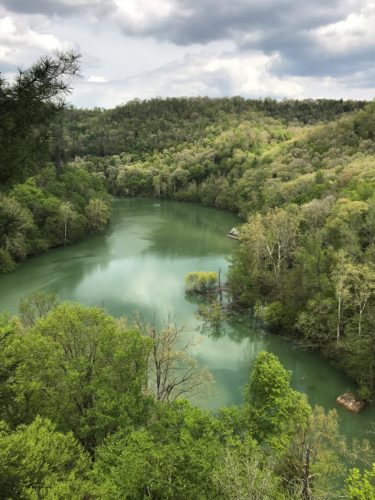
Is that beautiful, or what?!?!?!
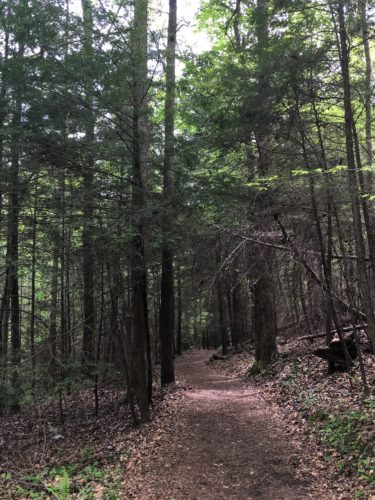
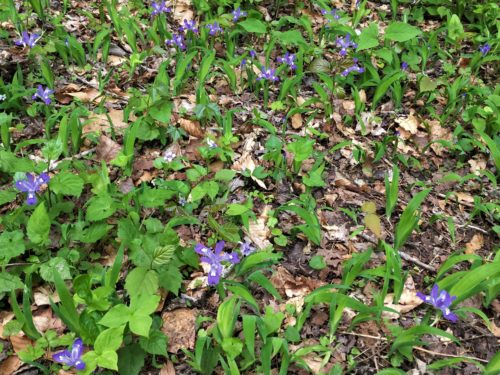
During the hike to the Arch, you emerge to a view of the top of the Yahoo Falls. Looks like a loooonnnng way down!
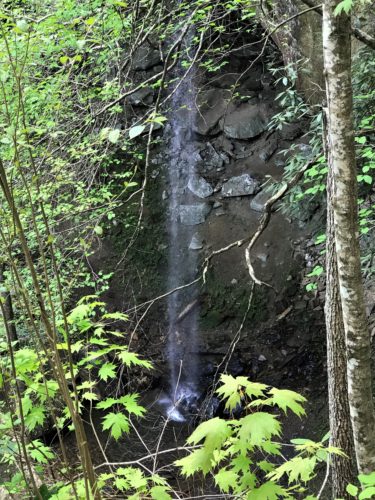
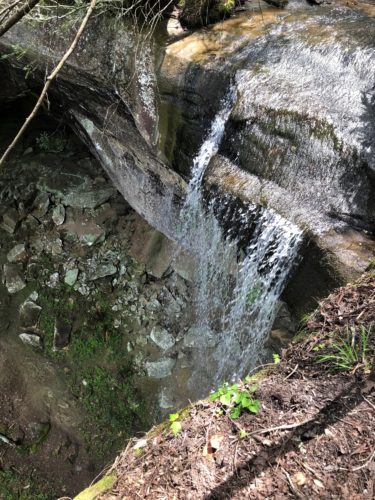
There he goes again.
Risking life and limb for you, dear readers.
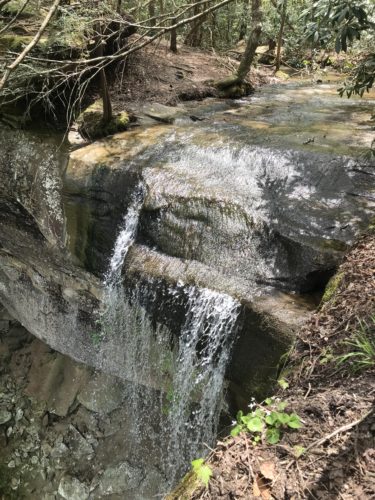
But don’t despair or feel guilty.
He’d do it . . . blog or not. : )
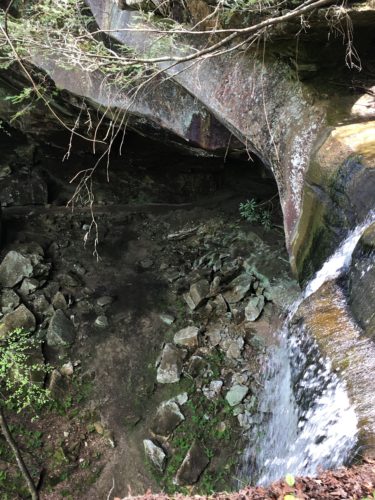

You have to cross this stream.
A few yards to the left, is the waterfall!
I’ll bet there are times when you can’t get across.
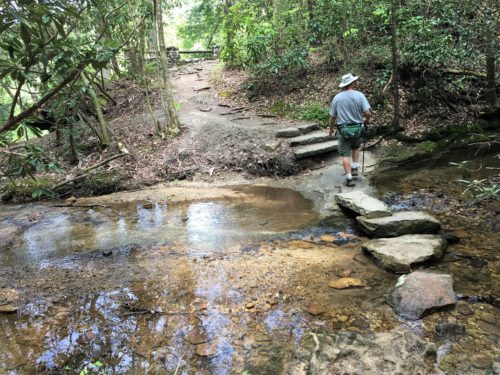
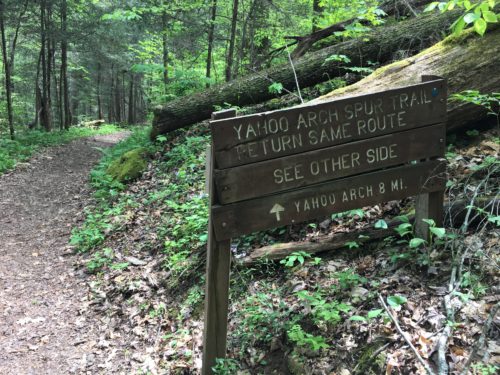
A sign!
The ‘other side’ just has “Parking” with an arrow pointing where we just came from.
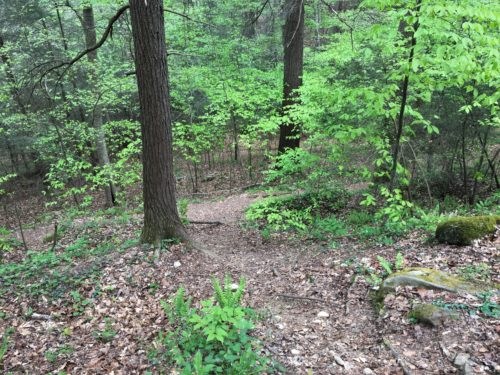
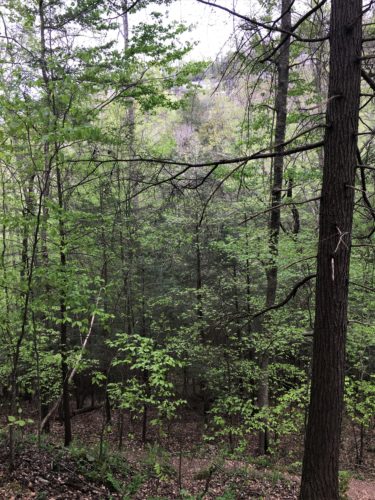

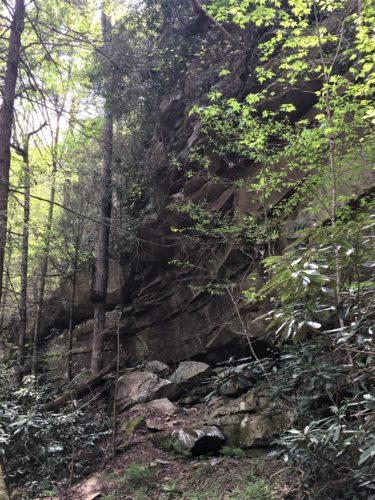
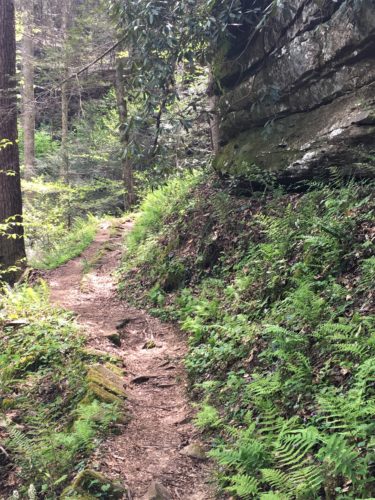
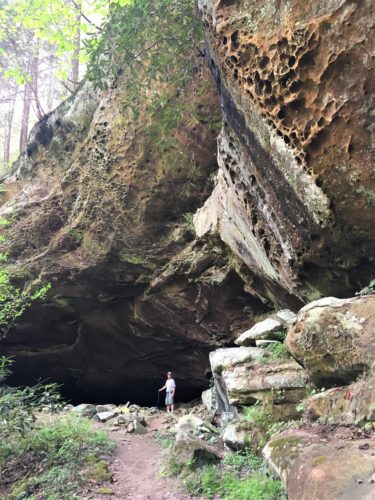
We’re here!
And much to our delight, there’s this enormous cave!



I didn’t notice when I took the picture, but look at the cross! Very nice! Most people just make rock piles.
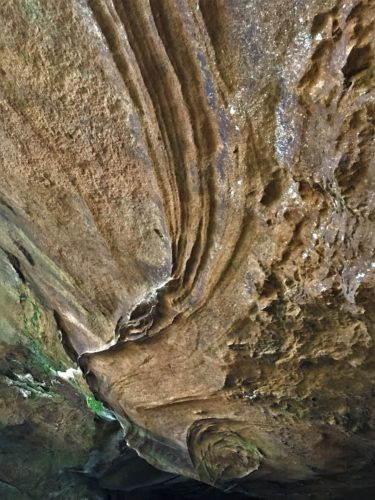
The groves are formed by the water that drips down and curls around.
Pretty awesome!
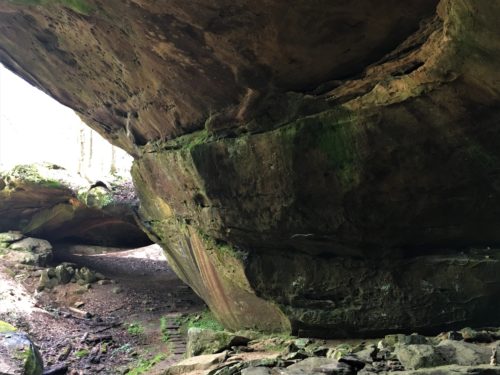
A bit of a waterfall.
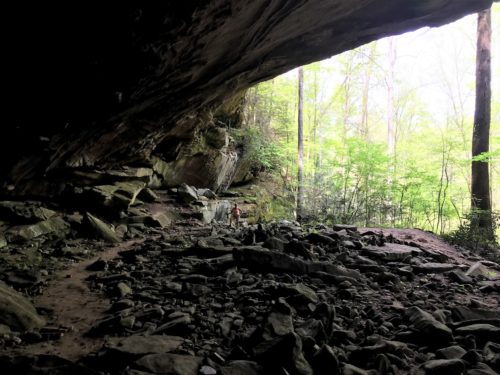
Blaine is inside the cave.
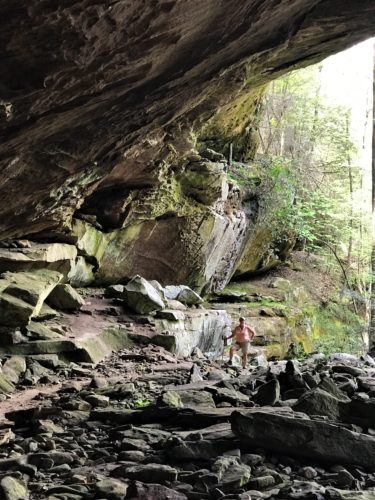
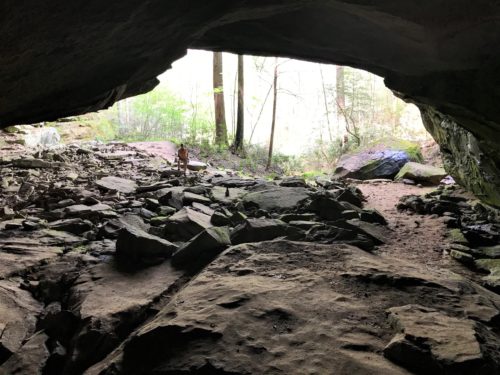
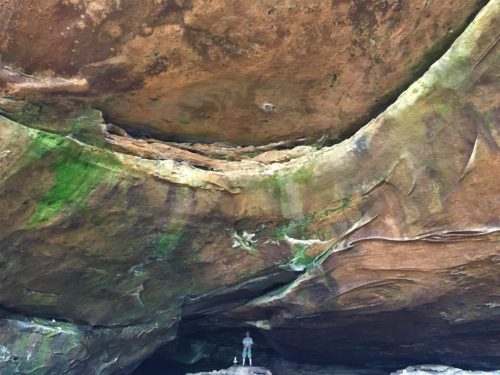

This Arch is about 17’ x 70’ according to the Daniel Boone Park website, but I found the cave beside it even more interesting. What a place!
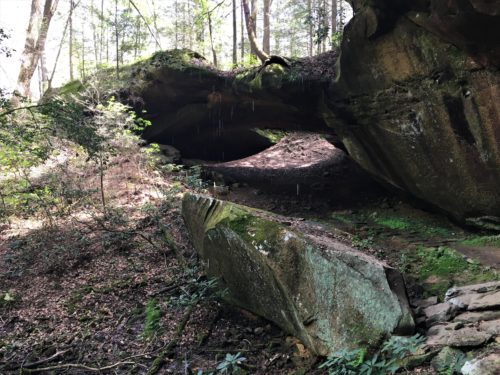
There’s the Arch
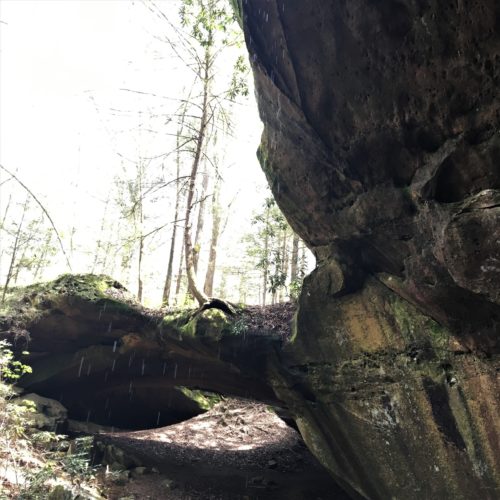
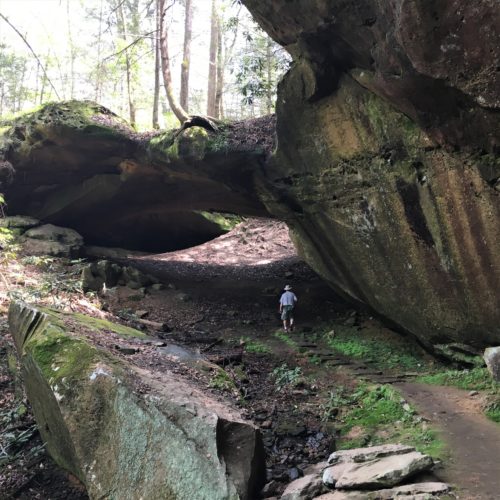
Blaine’s heading up to see if he can get on top of the Arch.
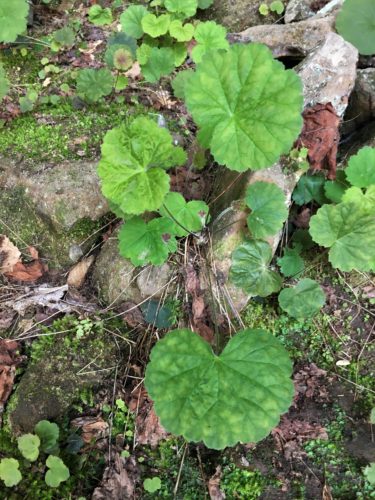
Don’t these look like geranium leaves?
They’re all over around the outside of the cave area.
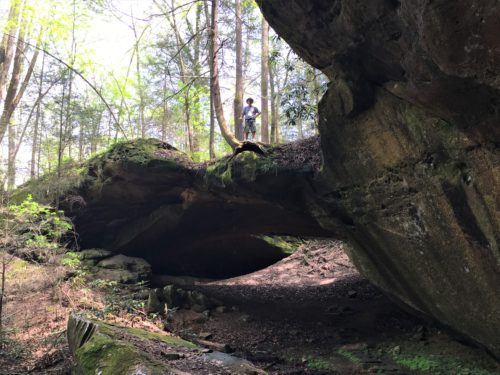
He made it!
Was there ever any doubt?
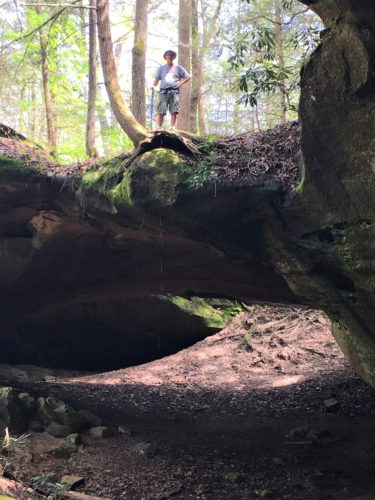
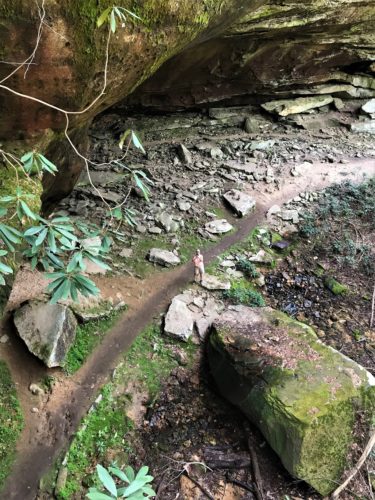
His picture from up there seems to have a better perspective than mine of him.
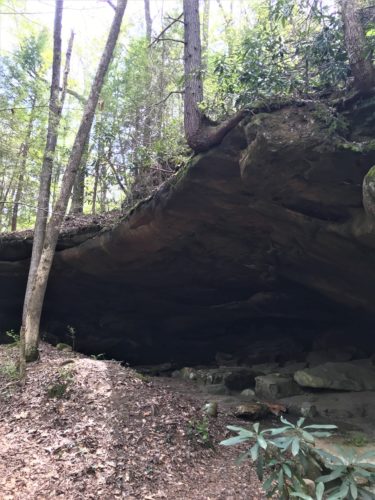
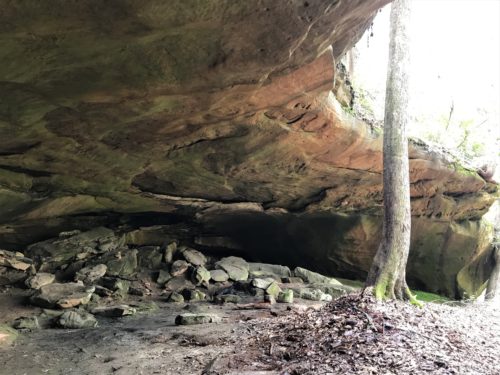
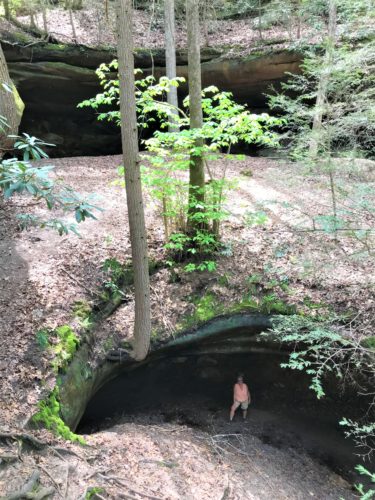
While Blaine was up there, he discovered another cave.
A cave on top of the cave!
But he didn’t explore it.
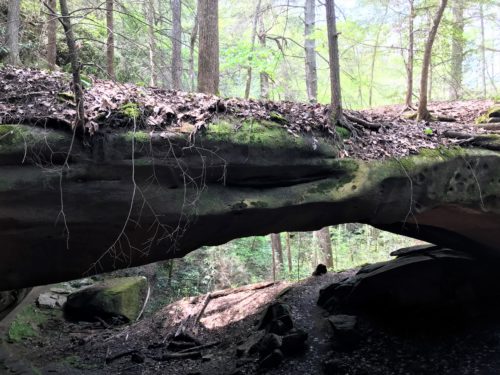
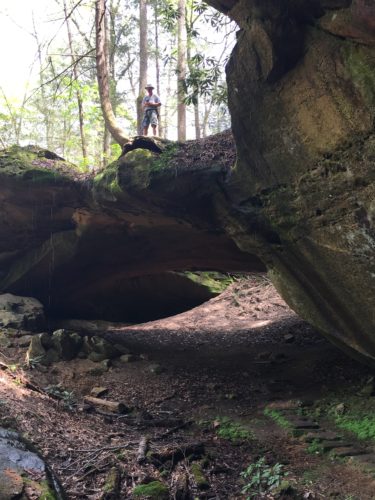
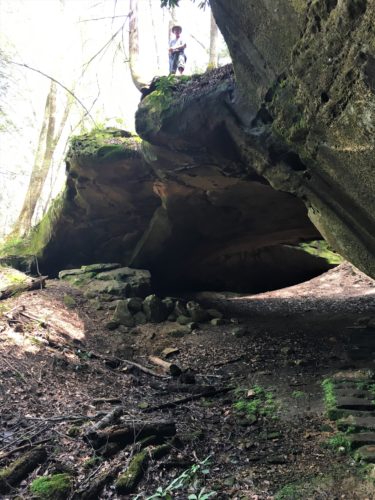
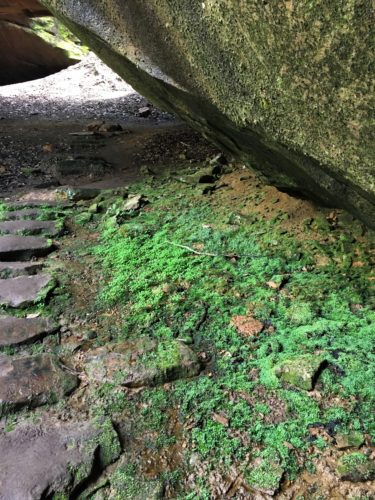
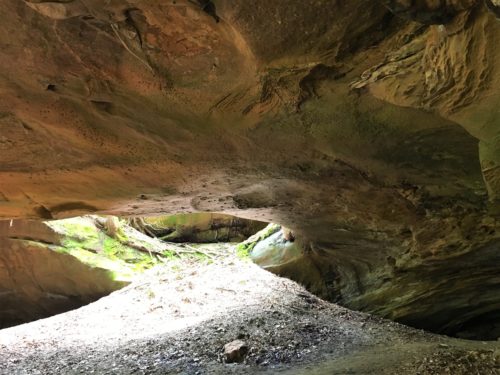
The underbelly of the Arch
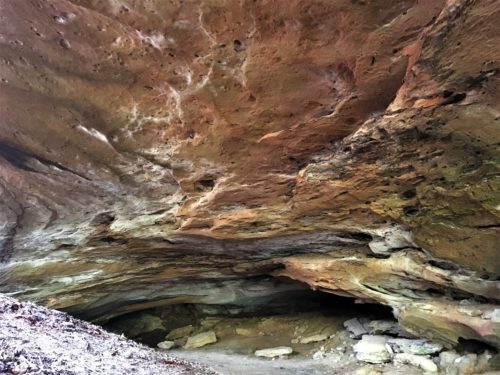



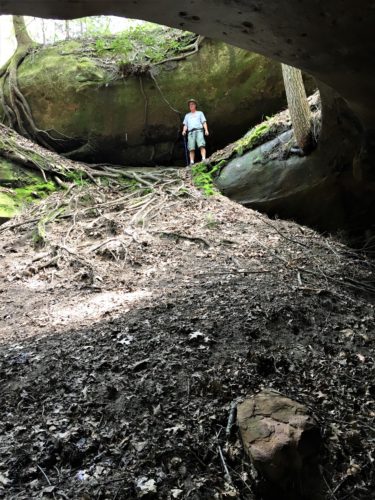
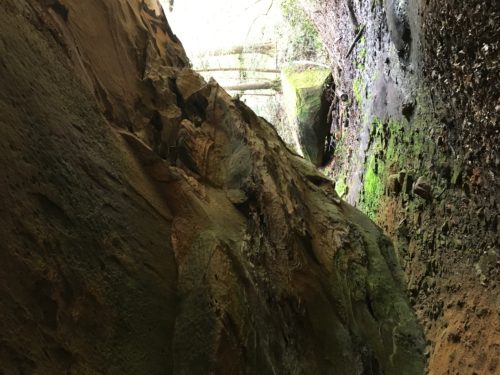
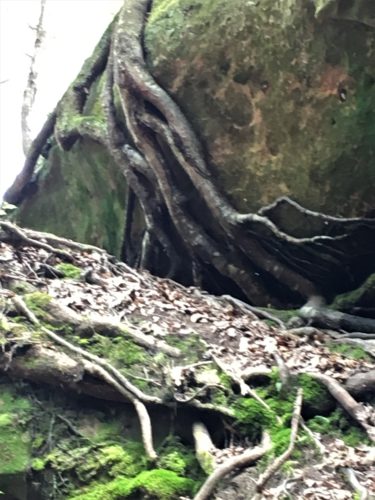
A tree clings to life.
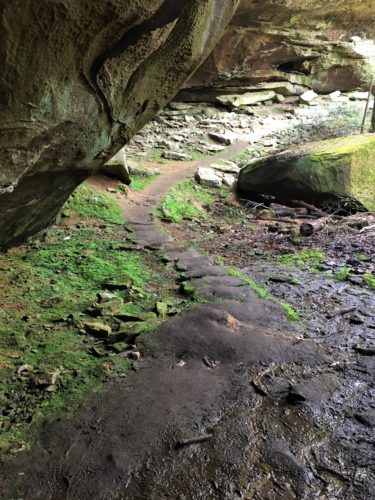
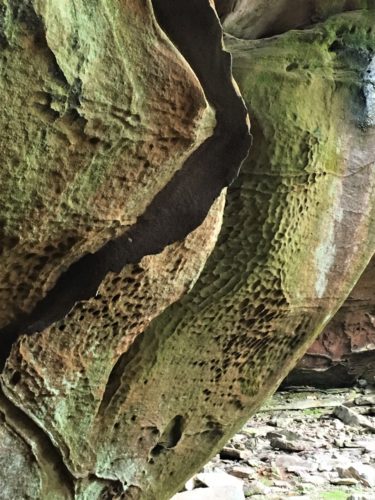
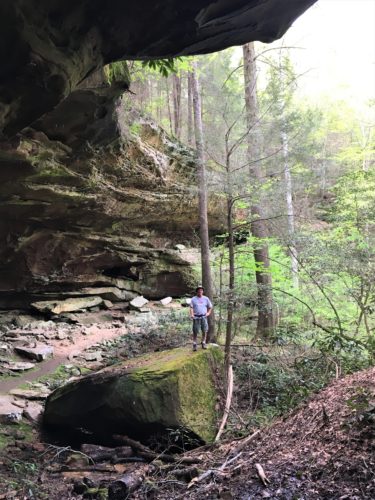

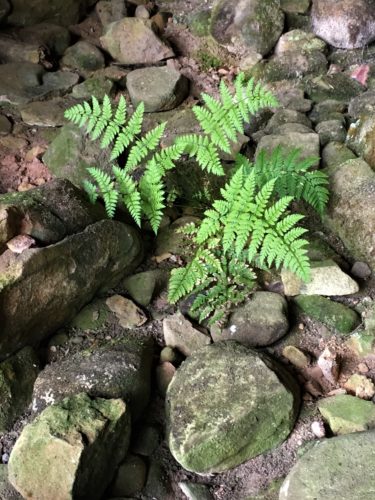
We sat inside the cave and ate our apples.
This was the only living thing. It’s very dry in here.
Now to find the base of the Yahoo Falls.
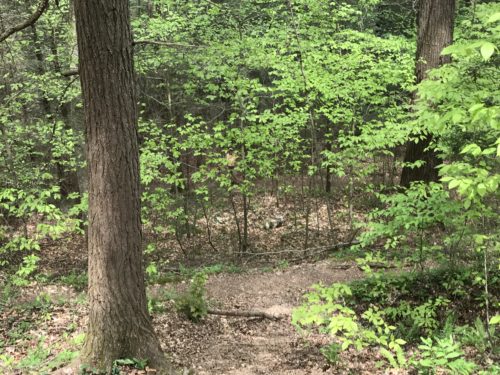
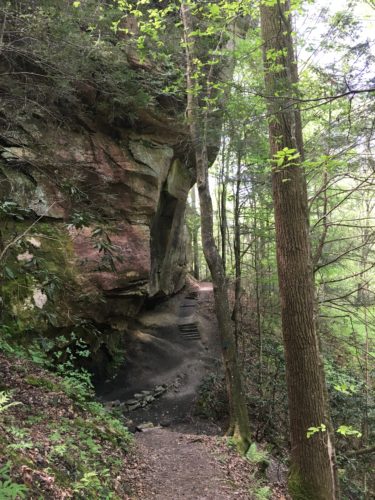
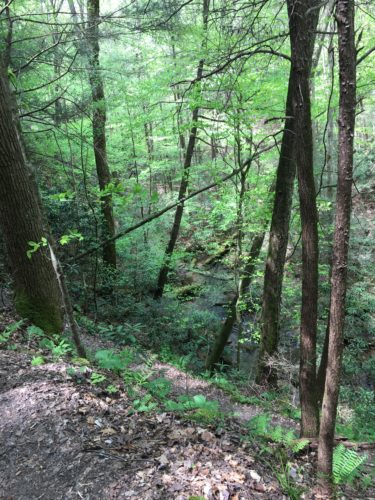
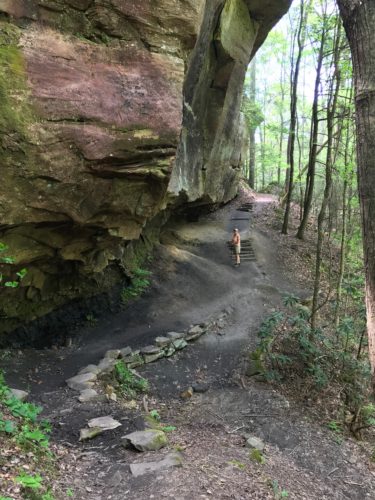
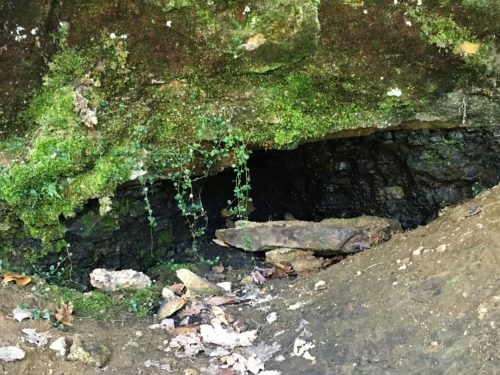
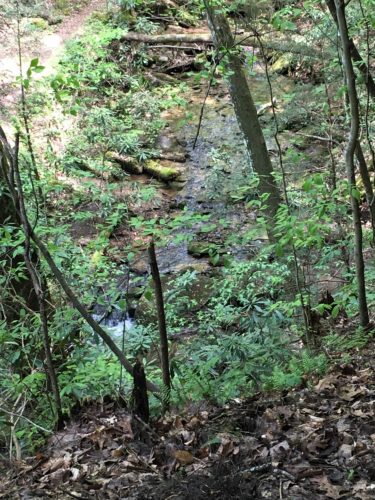
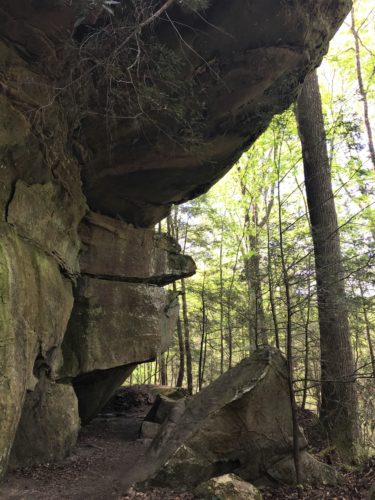
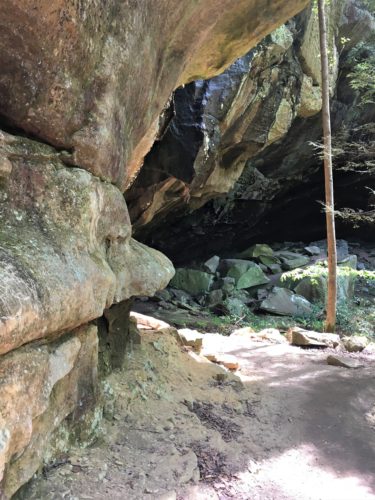
We’re here! An even more enormous cave!
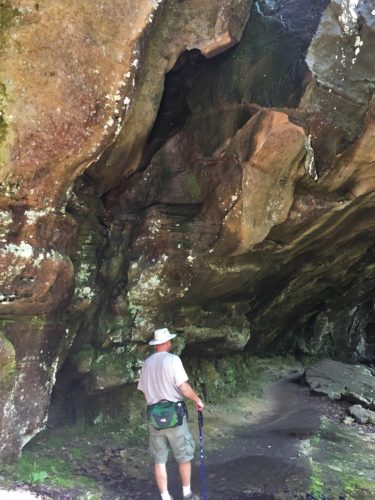
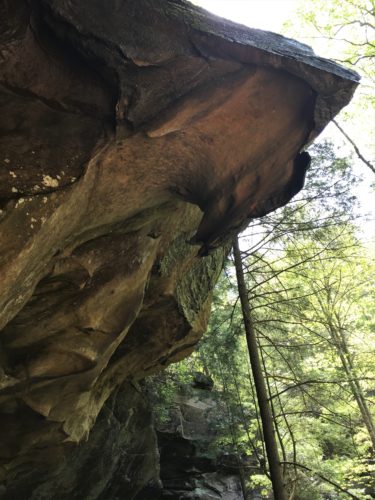

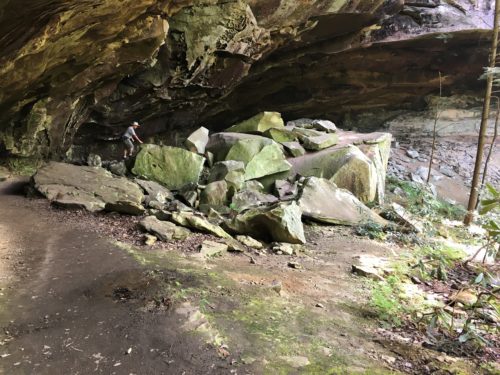
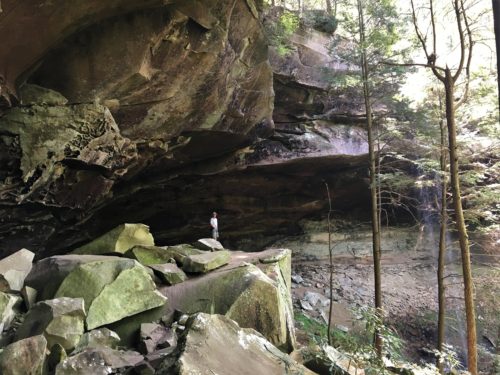
The waterfall itself has a 113-foot drop, but again, the waterfall in my humble opinion, wasn’t the star of the show. That was the cave area! In looking for dimensions and information (which were very scarce!), I was at least able to uncover that this is “one of the largest rock shelters” in the area.
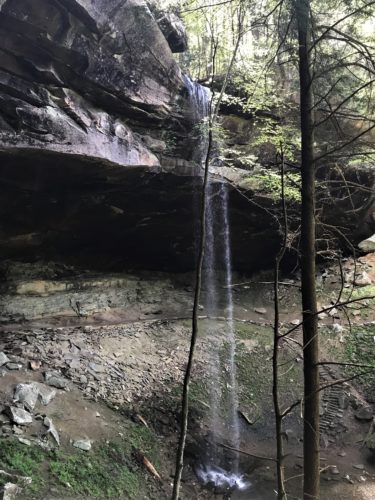
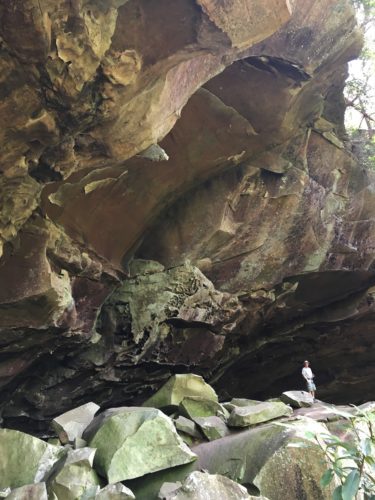
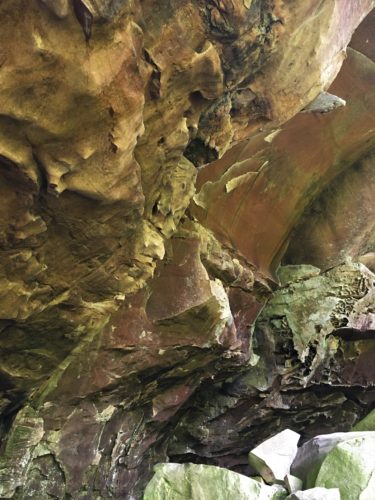

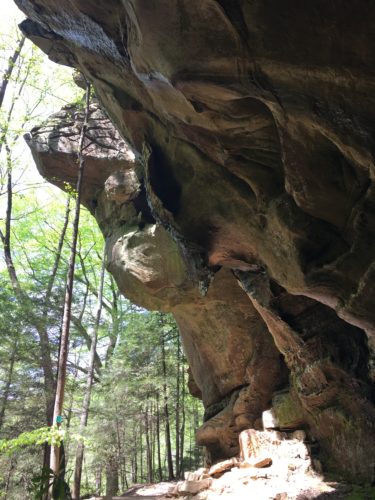
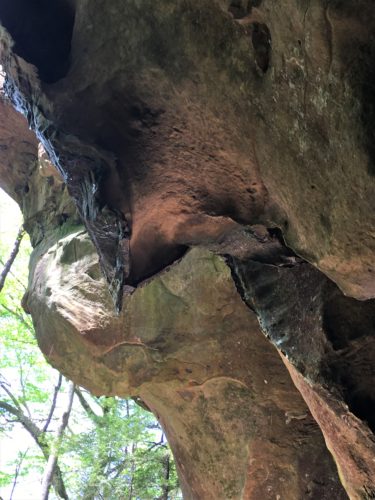
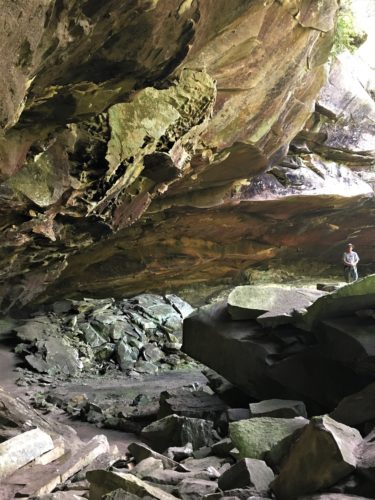
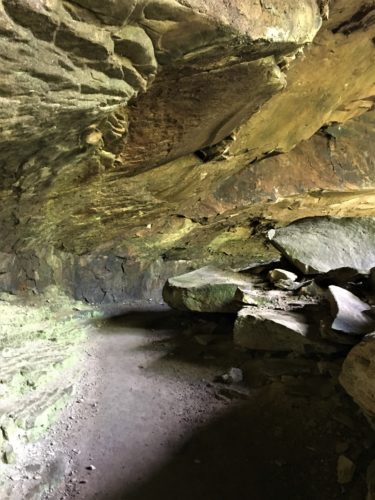
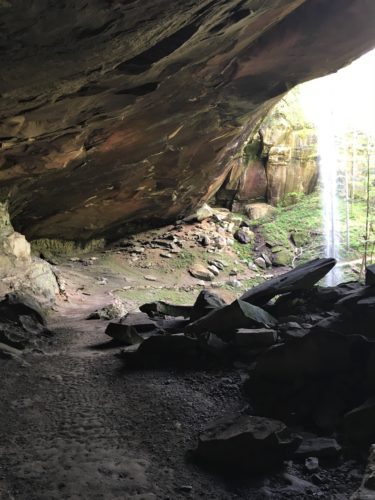

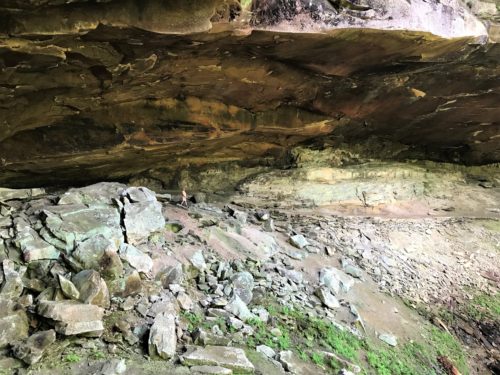
Can you find me?

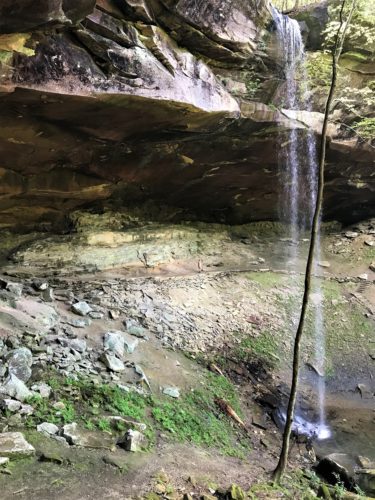
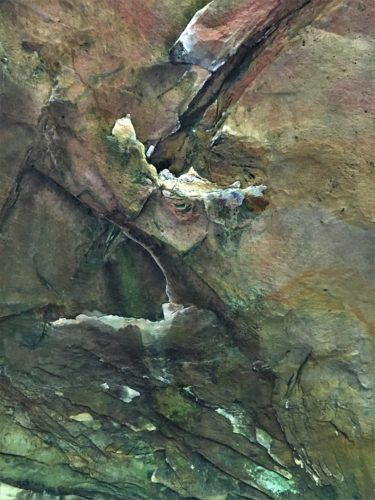

Blaine’s over there somewhere. : )
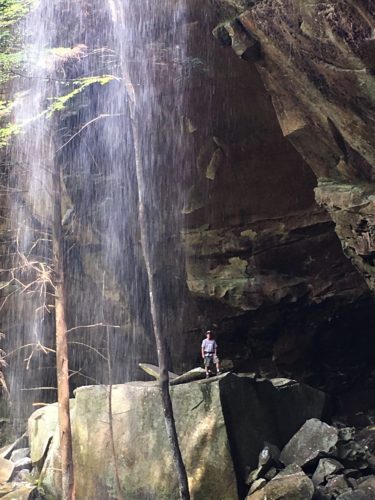
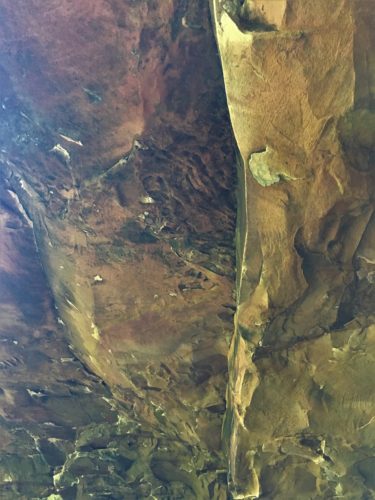

This formation is on the ground.
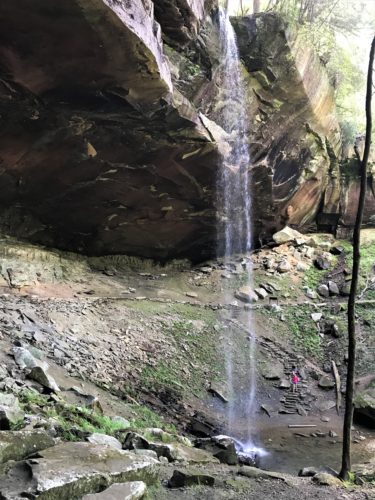
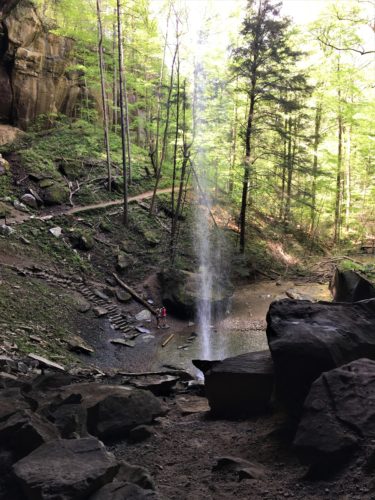
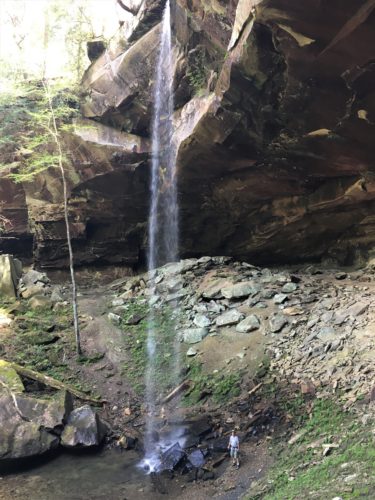
He made it all the way to the bottom, but I didn’t go down.
Miscommunication.
I thought we were doing more strenuous hiking today, so I decided to save myself a few steps.
I could’ve gone down. : )
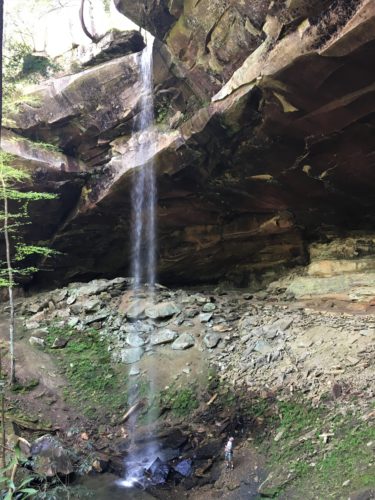
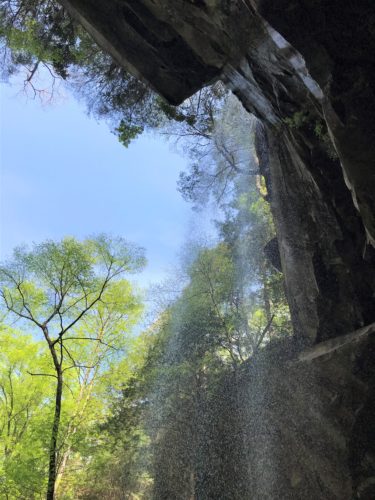
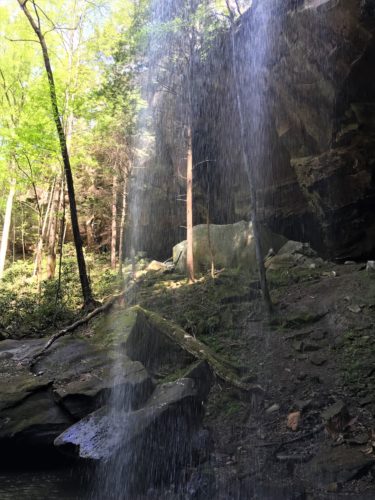
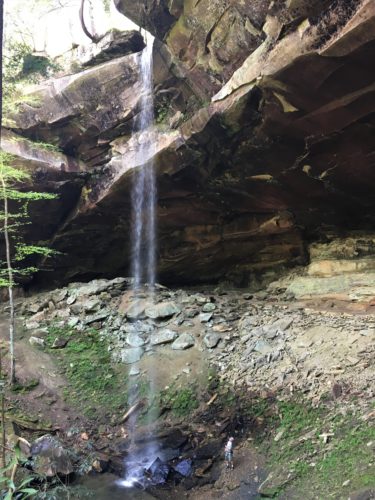
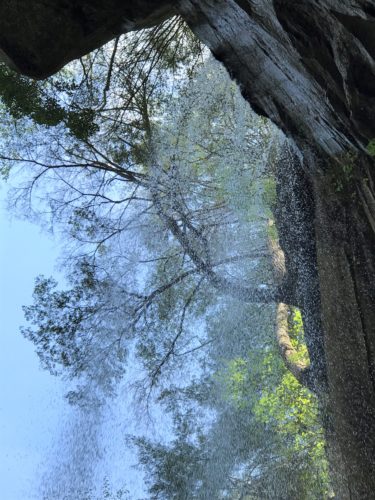
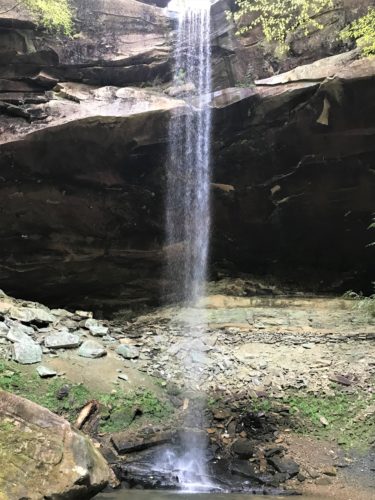
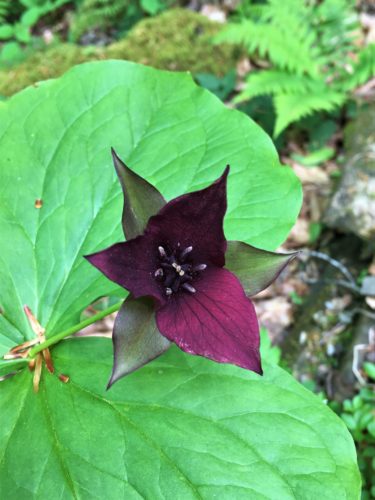
While I waited for Blaine to come back up from the base, I discovered this!
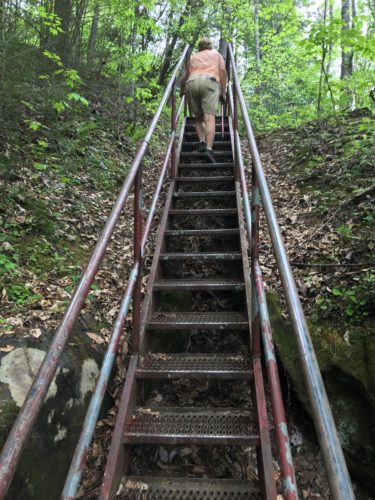
We had to climb a ba-zillion metal steps to get back.
I didn’t much care for it.
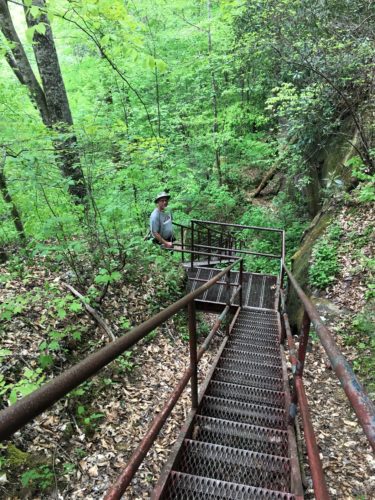
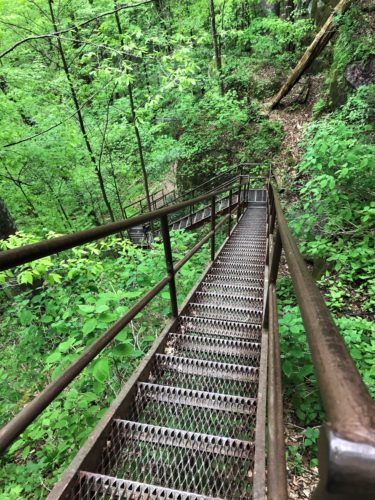
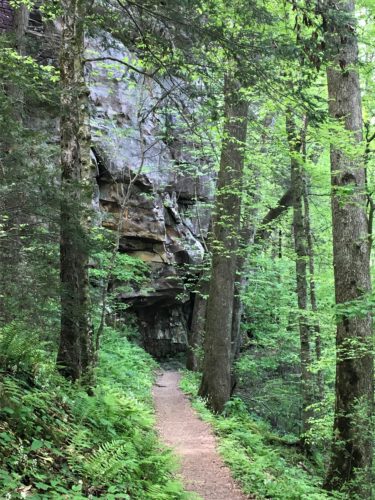
And there you have it.
Although it was a bit confusing and frustrating at times, we enjoyed a wonderfully blessed day!
